
Japan ❤️
I envy people whose dreams come true. I have to execute my myself. 🙂
Full route:
Tokyo

The first few hours here I had a “loading location”. Temperature difference from +13 ° C in Kiev to +36 ° C in Tokyo, humid and stuffy air instead of April spring freshness … Ah, and “intuitive” Asian navigation.

For example, this is how a subway map looks like. And so that it does not seem that in fact everything is not so difficult, I will add: in fact, there are several subways in the city. Plus monorails, express trains, private lines … This scheme brings all the Tokyo subways together. Cool, isn’t it? Having weighed all the pros and cons, I took out my rollers and went to the center on my own.

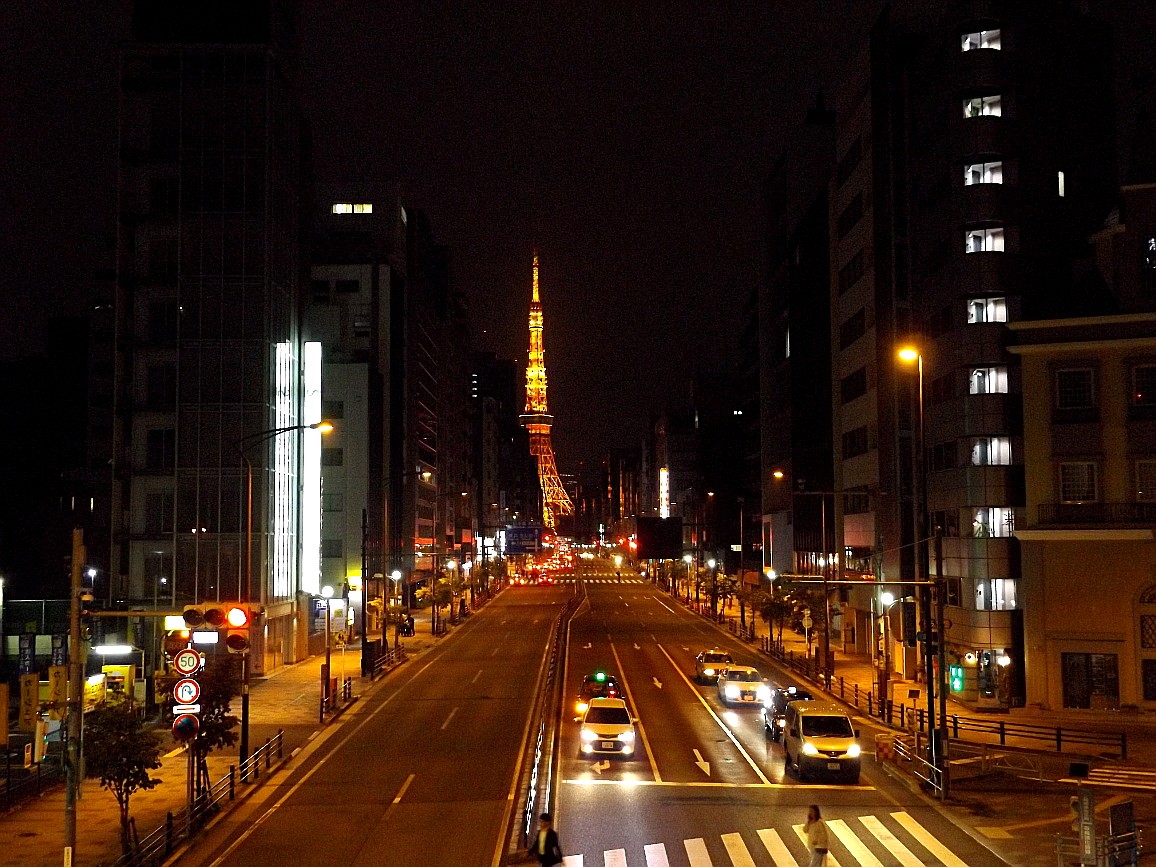
The city is really huge. And at the same time, it works accurately and smoothly, like a clock. For all the time I have not seen a single traffic jam.

There are a lot of taxis, but only in special collection points. The fare, by the way, is exorbitant. For example, a trip from the airport to the city center will cost you 20,000 yen (about $ 200).

Drink vending machines are everywhere, even along deserted highways. Sometimes they stand every 5 meters.


Japanese megacities are very difficult to confuse with any others. Despite the crushing intensity of urbanization, the abundance of modern architecture and the everyday high technology in general, their cities remain green. Wherever possible, trees grow, everywhere lawns, shrubs, flowers bloom, many birds.

Smoking is prohibited not only in establishments, but even on the streets. Except for the rare specially designated places.

However, the rules here work as we do: you can’t, if you really want to, you can.

I can’t imagine why the Japanese would even be able to cook.

Perhaps they have such a hobby, like knitting.

Because with such a choice of ready-made freshest food in the markets, this is a completely unnecessary skill in life.

Imagine how pleasant it is to leave a stuffy office, take a fresh bento lunch there, sit on such an embankment opposite a large artificial island with skyscrapers and have a delicious meal. 🙂

But the most pleasant thing here is the parks. City parks. They are amazing.

There is no pathos, scale and other completely unnecessary things here. They are just cute. Nice and neat.

What else do you need to to enjoy the gentle beauty of nature in the heart of the largest metropolis on the planet?


And 5 minutes from such an island of serenity, a noisy office quarter can begin.

Schoolgirls in skirts. Even if you know about their uniforms, it is amazing to see them flood the entire city in a moment.

Sunset falls on artificial islands in Tokyo Bay.

And my hostel was right under the Heavenly Tree – the TV tower and the tallest building in Japan.

The next morning, I decided to drive to Akihabara, a large anime and manga district, the center of all this movement in the world. Already at the entrance, the industrial streets begin to transform.

The streets of Akihabara are packed with people even on weekdays. Interestingly, teenagers are almost in the minority here.

Most of the production is aimed at adults, much like our films. Kodomo, children’s anime that is popular with us, is very small here: children and teenagers prefer Western cartoons. You need to grow up to anime. : D
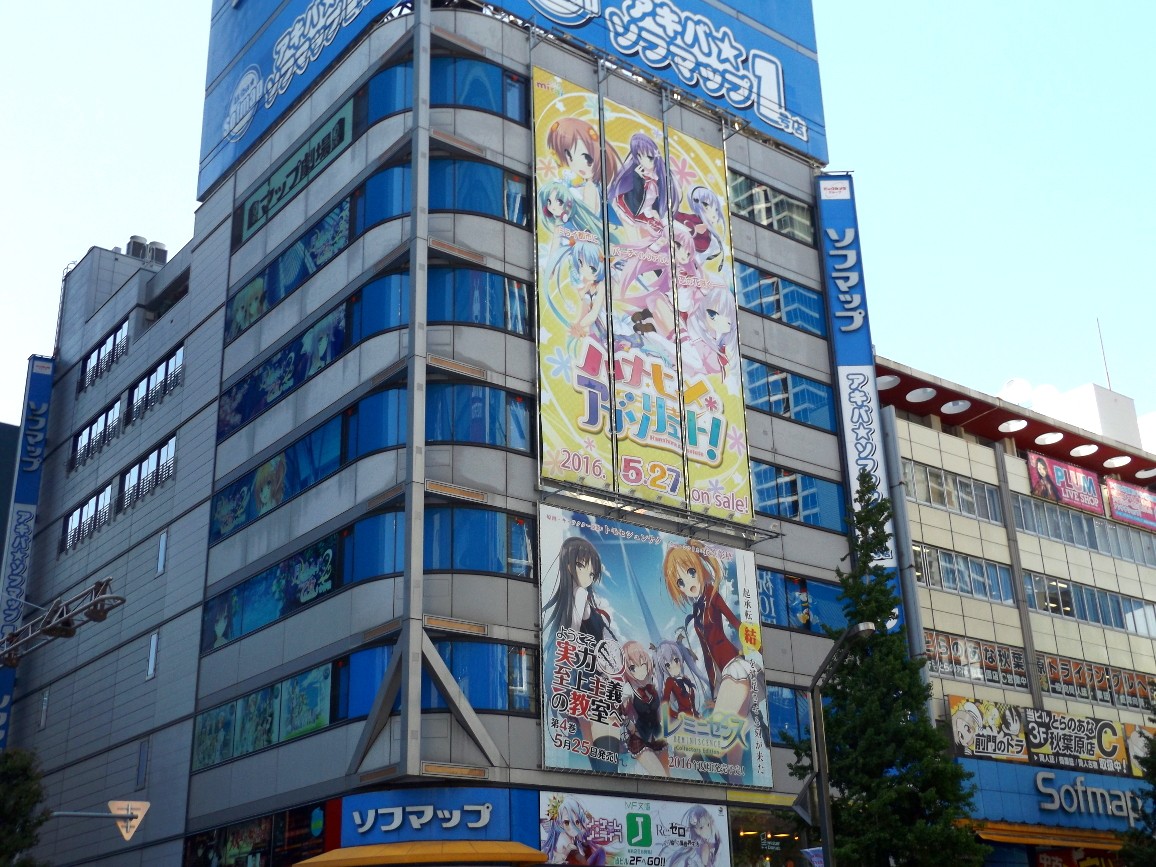

On the walls of buildings are posters advertising new products that will appear in the top ratings in at least a few months.

Often from here with the purchase of a Blu-ray disc begins the path of releasing what we then find in our online cinemas and torrent trackers.

As for manga – black and white comics, they are sold here in tons in dozens of stores. IMHO this is bad because when there is too much variety, it becomes incredibly difficult to find something worthwhile.

And otaku are anime nerds, and they are completely stocked with various accessories based on their favorite works. For example, they buy dakimakura, such soft pillows with full-length characters that you can squeeze in your sleep.

For those who are especially stubborn, there is hentai – drawn pornography. However, in the context of Japanese culture, this is the most everyday phenomenon. The visitors were not at all embarrassed by the fact that I was filming them. It’s rather we are strange about it, making something special out of it.

For them, it’s part of the visual culture. We are not indignant that we have photographs of cute girls everywhere in our outdoor advertising, even if it is banking services or real estate sales, although this is really strange and incomprehensible.
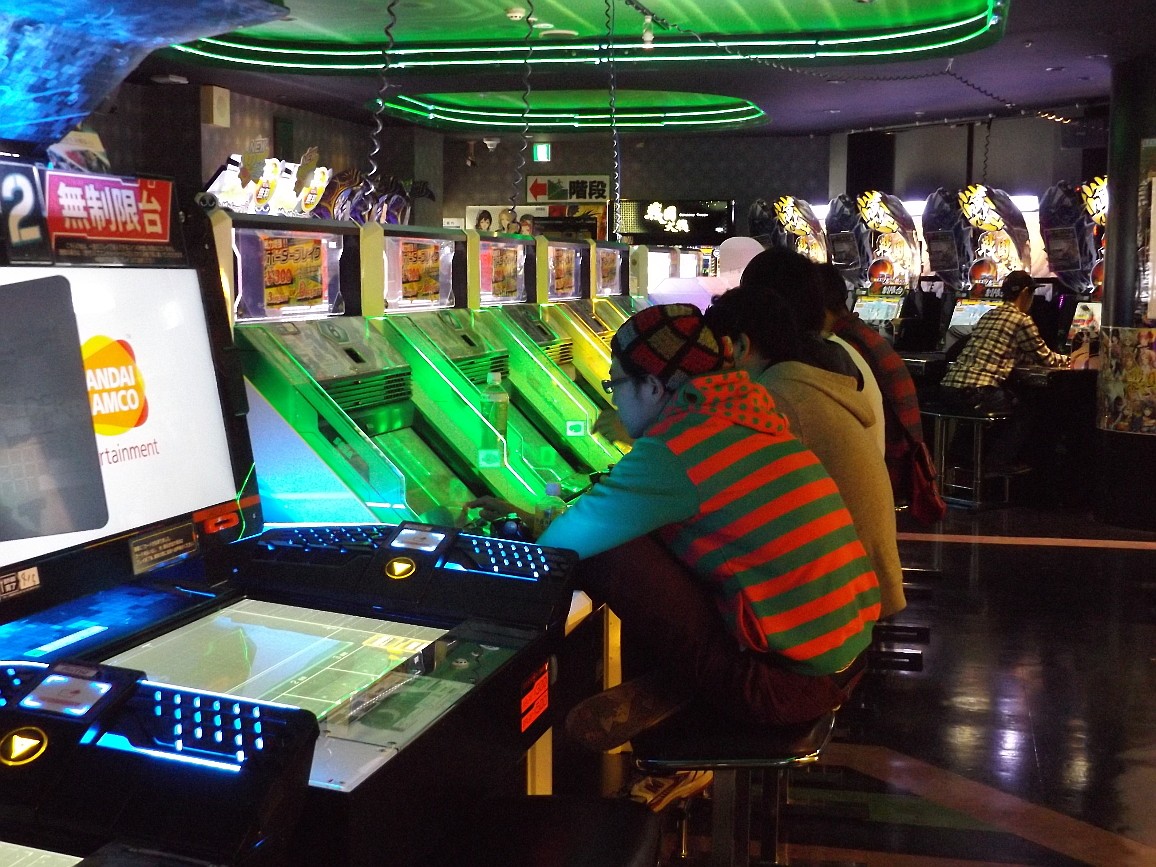
There are slot machines throughout the city, but it is here that they are found in almost every building. Inside it is INCREDIBLY noisy, playing extreme Japanese noise, like Burzum without drums and melody at full volume. A normal person will not be able to hold out for more than a couple of minutes.

Schoolgirls buy their own food from a burger vending machine. The dishes in the plates on the left display case are made of plastic, and they accurately reproduce the appearance of the finished dish, something like a menu at the entrance to the establishment, only much clearer.

In the meantime, I went to lunch at a maid cafe – this is when the staff are dressed and behave like a servant. In fact, the same geisha, only in a modern version. “Hello, Mr. What would you like? ” When I was leaving, I wanted to take a photo, but at the moment I pressed the shutter button, I learned that it was impossible to take pictures. Late, hehe.

This is how anime Mecca looks like.

In Roppongi, the most foreign quarter of Japan, I found another one spider Maman immortal Louise Bourgeois. Last time I saw such a handsome in Moscow for Christmas, at the entrance to the Garage gallery exhibition of works by its author. Globalization.

View from the rooftop of Roppongi Hills Mori Tower. I couldn’t, the city really goes beyond the horizon.

I try to imagine the role of an individual in the process of building this concrete-metal colossus and understand that our level of interaction is something transcendental.

Nothing special, just a post-apocalyptic rider on a mechanical mammoth at the entrance to the Museum of Modern Art, subtly hinting that nothing ordinary should be expected here.

Empty stands, some comments on photos that are nowhere to be found. My friend is at a loss, I’m trying to grasp the meaning. Understanding comes gradually, as you read the comments. Hard enough and reactionary enough. “Exhibition” about the Second World War, openly exposing the methods of the Japanese in the first person.

Near another empty wall is the only monitor on the floor, where they show how these photos are put back into boxes. The police are nearby.

At the exit from the hall there is a detailed commentary from the authors. The city authorities banned it in the National Museum of History as contrary to the current foreign policy of Japan, plus aggressive propaganda of Nazism and a number of other points. In response, the Museum of Modern Art invited the authors to exhibit it with one “small” change to get around the ban. I must admit, it turned out strong and original.

Nearby was an exhibition about the illusory nature of freedom of action. We greedily swallow visual images that were clearly lacking in the previous exhibition.

“You can cut yourself,” but the knife nearby is protected by a transparent flask. “You can climb over this wall,” and a guard is nearby. “You can chain yourself,” and a girl with keys is next to him.

Well and the classic, “Nobody will forbid you to do what you like.”

“There are many versions of you, as many as people you know. When you get rid of these ‘versions of yourself’, who will you see? “

In another cool museum of modern art, they found an exhibition dedicated to the epidemic of culture zakka, which originated in Tokyo and is now raging around the world. In short, this is kitsch 2.0, associated with embracing consumer goods in order to sell them ten times more expensive.

The canonical manifestations of this culture are designer boxes, little things in pastel colors, muzzles of owls and deer on pendants, strange prints, even the “sophistication” of lofts. All those consumer goods that make you say “Wow!” When you see it. The Japanese say zakka is the art of seeing more in everyday things. The author of the exhibition replies: “You are trying to buy an ideal life.”

Shinjuku Station. Passenger traffic more than 4 million per day, which makes it the busiest railway station in the world.

The Shinjuku area is very powerful. There are dozens of skyscrapers, hundreds of office centers. And very close by, at the “foot” of the skyscrapers, they make cheap ramen, nearby are traditional izakayas, where plankton creeps out in the evening to have dinner and drink sake with colleagues. Powerful contrast, in short. And another 15 minutes from here is Kabukicho, something like the red-light district ruled by the yakuza.

Food not bombs right under the city hall. Homeless people in Japan are the strangest I’ve ever seen. Not only do they not beg, on the contrary, many of them even officially work! At construction sites, cleaners, security guards, and at least recyclables on the streets are collected. Someone is saving up for an apartment, but for now they live in a cardboard box under their office. O_o

I dropped my jaw when I saw a bum lying on the side of the road take an iPod out of his pocket, flip through a couple of tracks and lay down to listen to music. In general, the city has a large-scale program of assistance and resocialization of the homeless. Those who can be seen sleeping on the streets deliberately chose this option.

Evening falls, neon signs turn on, the city is transformed.

Business districts are beginning to resemble a protracted party of huge proportions.

And this carnival of nightlife goes far beyond the horizon. Tokyo never sleeps.
Osaka

With all your senses, you feel that you are no longer in the capital.

Some indistinct galleries where everything is sold. Well, that is literally, from sweets to chemicals.

These quaint gallery markets are much more popular with Osaka residents than supermarkets. I can’t imagine why this is, but there is no dispute about tastes.

I have to admit, the appearance of the residential areas of the city made a depressing impression on me.
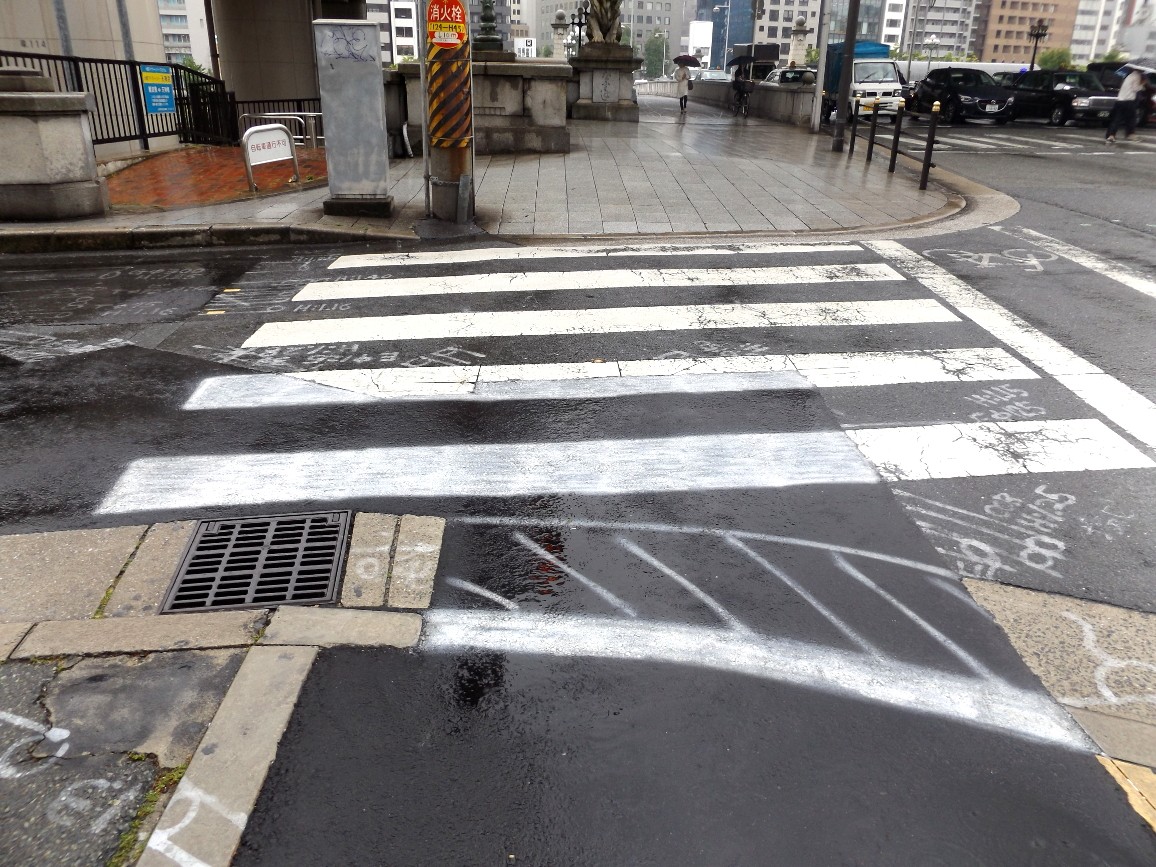
After several days in the almost exquisite post-industrial concrete jungle of Tokyo, I have already formed a strong impression of the visual culture of this country. And then the second Japanese city I saw by its appearance crosses everything.

It is the norm to park a bike with a chain attached to a sign “bicycles are not allowed to park”. Unfortunately, cyclists are not alone in this.

Dirty, noisy. My brain protests against this turn of events, but reality is stronger than any excuse.

Unlike Tokyo, the overpasses are low here, going right above the chaotic buildings, so there is also noise and periodic beeping overhead. Attempting a carefree walk causes psychological turbulence.

During rush hour, the metro has female-only coaches. Let’s think together why such cars have appeared. 🙂

There is even more visual debris inside the cars than in the Kiev chaos of advertisements and announcements. Brr.

My room is in a small ryokan, a traditional Japanese inn. Instead of a bed, there is a futon, such a soft sleeping mattress, I sleep on the same at home. The floor here is paved with tatami – hard straw mats. Earlier, before the advent of central water supply, they were used everywhere, now more for the sake of impressions, because it’s really cool. In general, I liked it.

I discovered a cute Japanese park right next to the ryokan. At least they have no misfires with this.

From this guy under the visor who speaks broken English, I learned that Osaka is a very mafia city, here half of the business belongs to the yakuza. It’s funny, in my understanding, the mafia are bandits, and not at all influential businessmen.

The choice of colors is wonderful here. It’s amazing how easily and naturally all this merges together, although engineering designs are – the clear opposite of the plant world.

Walking here, I had an insight. They do not make the park, they modify the forest.

National sport.

And all this was blown to shreds during the Second World War. Reconstruction of the castle complex almost cost the city bankruptcy. Although it turned out pretty.

There are huge park areas around the castle.

The exterior of the newly built castle completely repeats the real one, but inside there is a modern museum. Therefore, we will restrict ourselves to the exterior. He is beautiful!
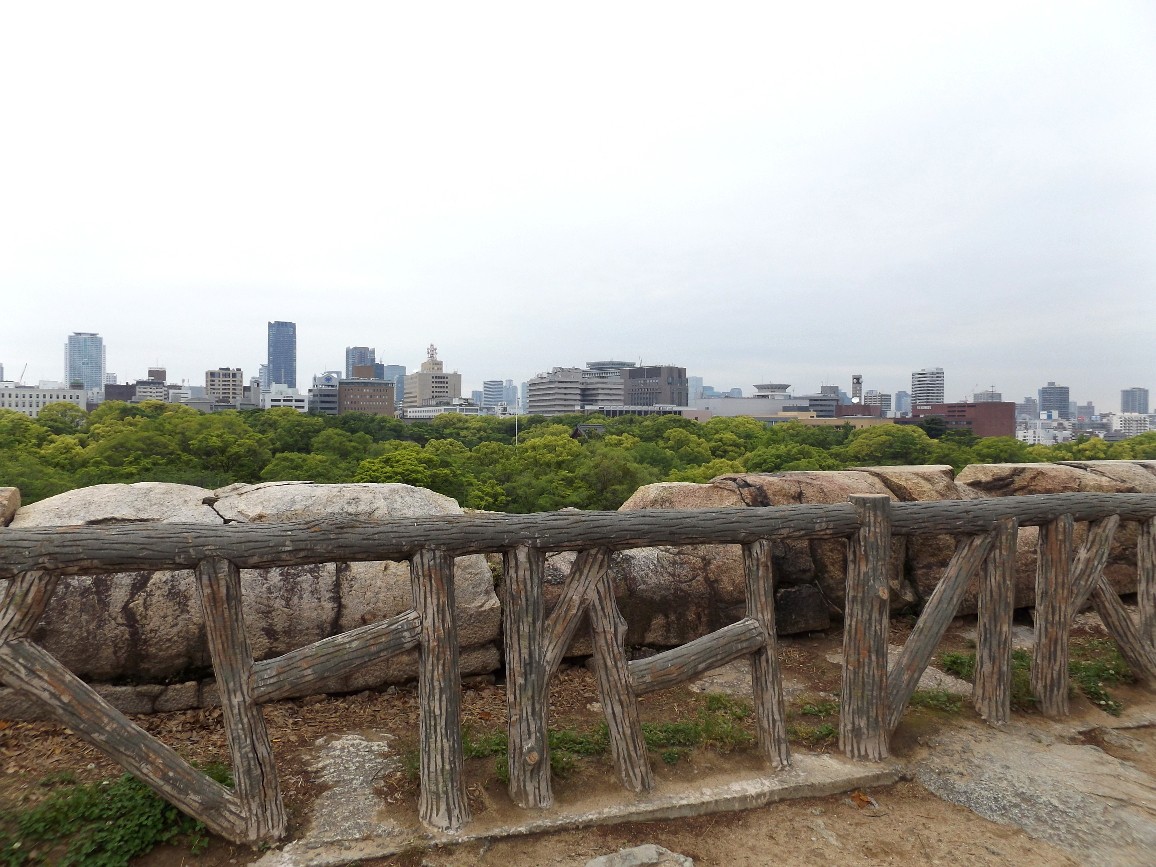
And around the castle there are solid skyscrapers. Somewhere on that side is Abeno Harukas, the tallest skyscraper in the country.

On foot to another dimension.

Business life is in full swing in this dimension.

I’d like to believe that the city will be transformed as it develops. In the meantime, we have what we have.

Since I still had a decent amount of time, I decided to stop by to look at a couple of temples. Usually religious subjects I am of little interest, but I have not yet seen Shinto shrines, why not.

Dashingly you, comrade Buddha, fit into the pagan religion.

People at the entrance throw coins into a box, take off their shoes, go inside and pray. Who are they praying to? Good question.

In general, there is some kind of game with religions. I counted six popular ones: Shinto, Buddhism, Zen, Taoism, Confucianism and Christianity. Zen and Confucianism are rather philosophies, Buddhism with Taoism also falls short of religion, Christianity is boring, and Shintoism is generally pagan.

It is unrealistic to deny all “alien” religions hard: too high competition. Therefore, the Japanese have to believe a little in everything. And even more: going to different temples for different events.

Religion is business.

There are also typical elements. For example, these are omikuji – fortune-telling sheets. A funny thing, found in Buddhist and Shinto temples.

Koi carp ponds are found only in Shinto shrines.

But Buddhists have cool cemeteries.
In general, depending on the circumstances, you can choose whose temple you will go to today. It is very convenient if you know how to ignore mutually exclusive paragraphs by an effort of will.

Graphic schedule of the store. Aesthetically pleasing and visual.

Finally I got to what I most wanted to see in this city – the large Kaiyukan Oceanarium. The exposition begins from the top of the building, where terrestrial animals live, only feeding under water.

Someone is chilling.

Someone on full alert.

The route gradually descends lower and lower, and schools of fish and speed dolphins are already swimming nearby. You look at them from the glass tunnel, and they look at you.

Even deeper is the largest aquarium there is. It is big enough for a pair of large whale sharks, dozens of tiger sharks, a whole bunch of stingrays and a variety of other representatives of the underwater world to feel spacious.

Only in height, it already consists of 8 floors. And you descend lower and lower, until you reach the very bottom, where the fish lying down to rest are looking at you questioningly.

Below are the “solitary cells” for jellyfish and other simpler creatures.

There are also cold sections specially for hanging out from Antarctica.

And on the way out, you can stroke the back of small sharks and rays. Nya!

By the end of my stay in Osaka, the first impression faded a little. There are quite a lot of cute places here and in the end I certainly do not regret coming here. Of course, this does not negate the dullness of the urban space outside the center, but it is clearly worth visiting this city if possible.
Kobe

This is what the city of the mafia looks like. Not mafia like neighboring Osaka, but a mafia city. In Kobe, the Yakuza have their headquarters, all their important meetings, gatherings and events are held here.

It is better not to ride on the Ferris wheel: from above there is a view of industrial structures stretching for many kilometers along the entire city.
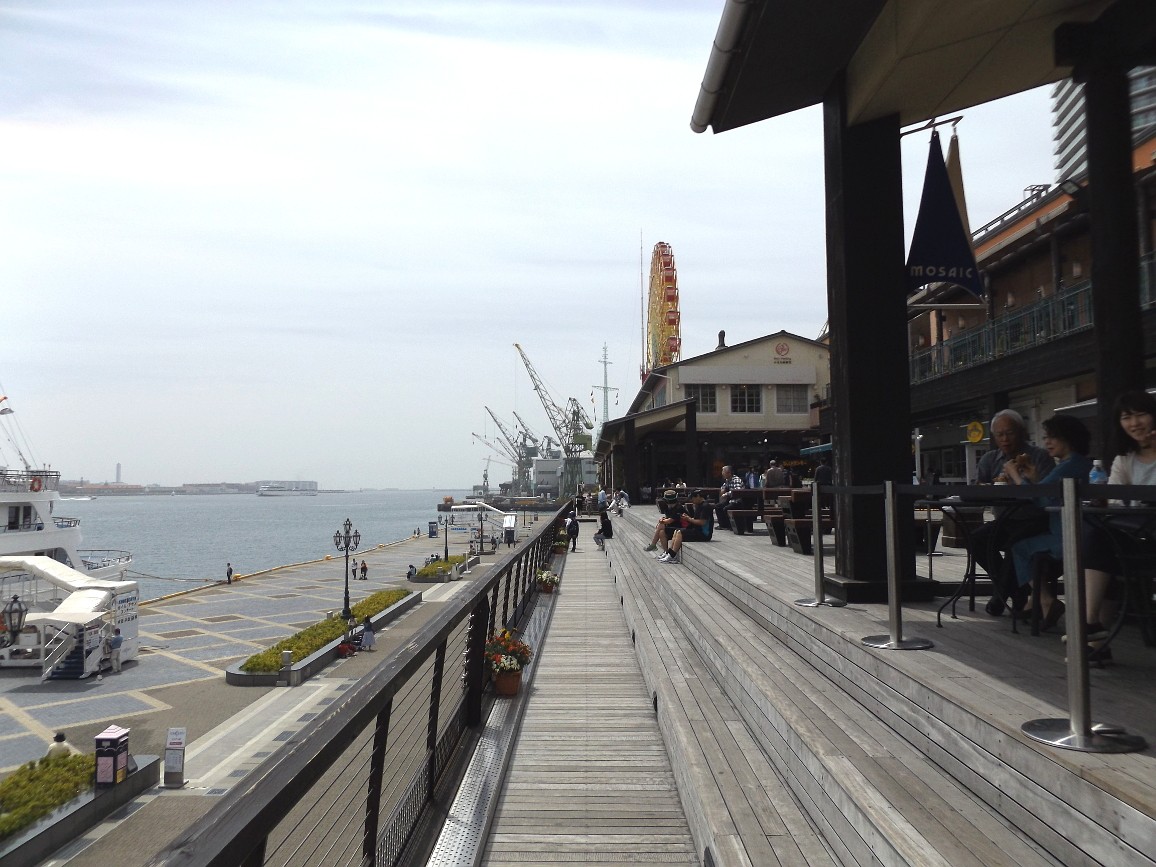
Here you can see a little that right behind the main embankment in the city center, barges and cargo cranes immediately start. Representatives of the mafia in the crowd are immediately visible: they walk in flocks in business suits, the toughest discipline, tattoos peep out from under the sleeves.
By the way, about tattoos. The Japanese don’t do them. Well, at most one small one somewhere, but in general this is the privilege of the yakuza, they clog the whole body. Therefore, the Japanese are really tense when they see foreigners with tattoos.

Ice cream legs with coffee flavor. The strangest ice cream in my life.

A kind of landmark of the city. At night, all the edges are highlighted with neon, it looks very cool, and during the day something like that.

Kites.
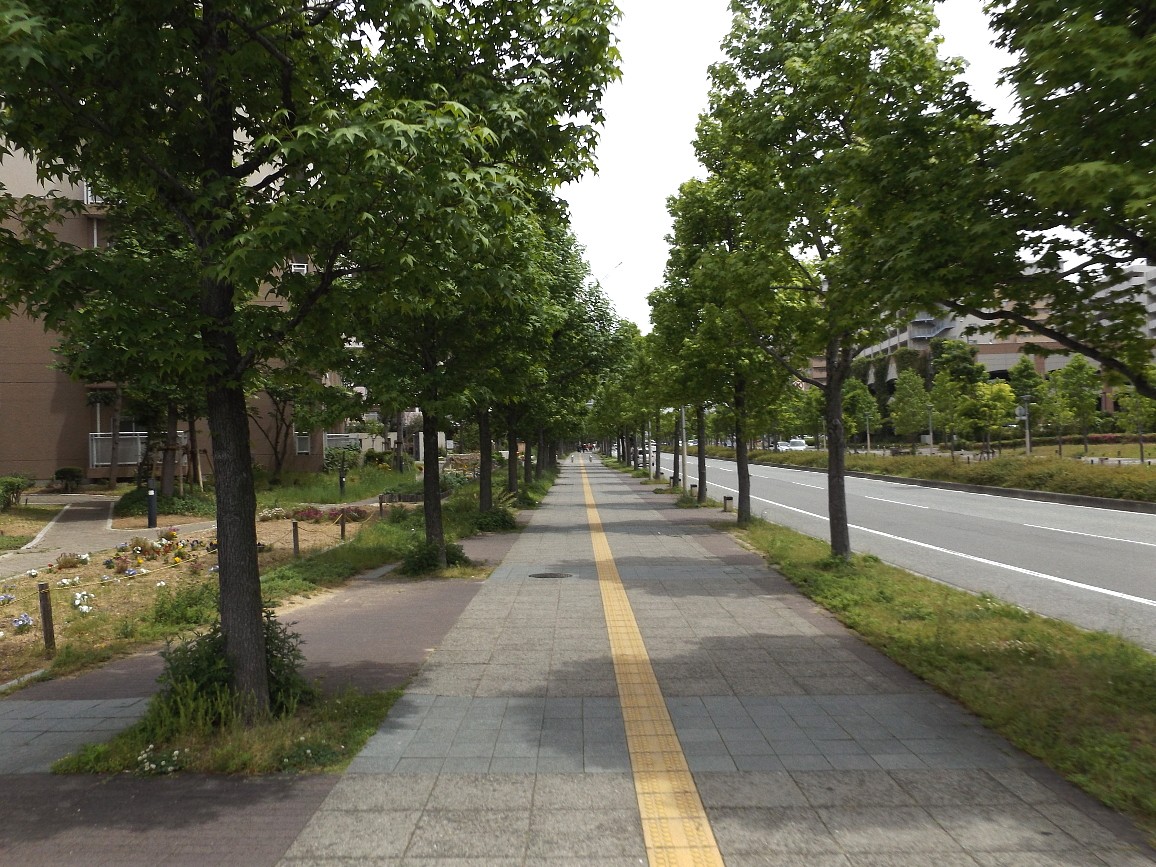
It’s very hot, the streets are almost empty. Oddly enough, the tiles under your feet are not hot and does not fry your feet through your shoes, they are just warm.

I have no idea what it is or why, but there are many brothels on this street.

The family had a picnic on an abandoned jetty under a cargo overpass. Judging by the fact that the shadow of the flyover is 30 meters away, they have been hanging here for a long time. At the edge of the pier, homeless fishermen fish and smile at the strange alien with toothless mouths.


The outskirts of the city look even more inconspicuous than in Osaka. I’m going to the factory of one of the largest sake producers, they have a museum there. Passers-by look at me, then at my videos in bewilderment. There are no Europeans here at all.

It turns out that this is just one of the many sake factories in the area. And even not only they have a museum. But in this museum they talk about the traditional sake production, and not just show a bunch of industrial robots and conveyor belts.

Near each installation is an interactive display, which tells a choice of Japanese or English and shows the process in life.

Rice is ground, washed, soaked, and only then steamed.

Mold, water and yeast are added to boiled rice and it all starts to ferment.

When all this game is fermented, it is filtered many times until the liquid becomes clear and then packed in cool barrels. By the way, earlier sake was produced only in Shinto shrines, and enterprising alcohol barons adopted the tradition of nicely painting barrels from monks. “First, it’s beautiful.”

Sake, after several months aging, is sent all over the world. On leaving the museum, you can taste different varieties of their products. Everything is free, both the entrance to the museum and the tasting, but you just have to try the amazing fruit liqueurs based on sake, as you immediately turn on Fry from Futurama and you are already standing at the cash register with a couple of bottles and the face “Shut up and take my money “.

This is how the central avenue looks like in this part of the city. It’s good here with you, but for now.
Nara

Initially, I was not going to this city. But my friend said that if I am in the Kyoto area, then I MUST come here. All I knew about this city was that Nara was the first capital of Japan.

Therefore, what I saw was a big surprise.

Deer are walking along the streets of the city.

Moreover, these guys are completely tame, you can stroke them, feed them, play with them.

And this is what the largest wooden building in the world looks like. This temple is already about 1300 years old.

Inside there is a statue of Buddha 15 meters high, about the size of a five-story building, and weighing 500 tons.

I’m trying to figure out an ancient message. I think I am close to the answer.

“Thank you for your visit, come visit us again.”

It’s funny to see such a warning sign not somewhere on the highway in the Scandinavian forest, but in the very center of the city.

But for the locals, this is an ordinary walk around the city.

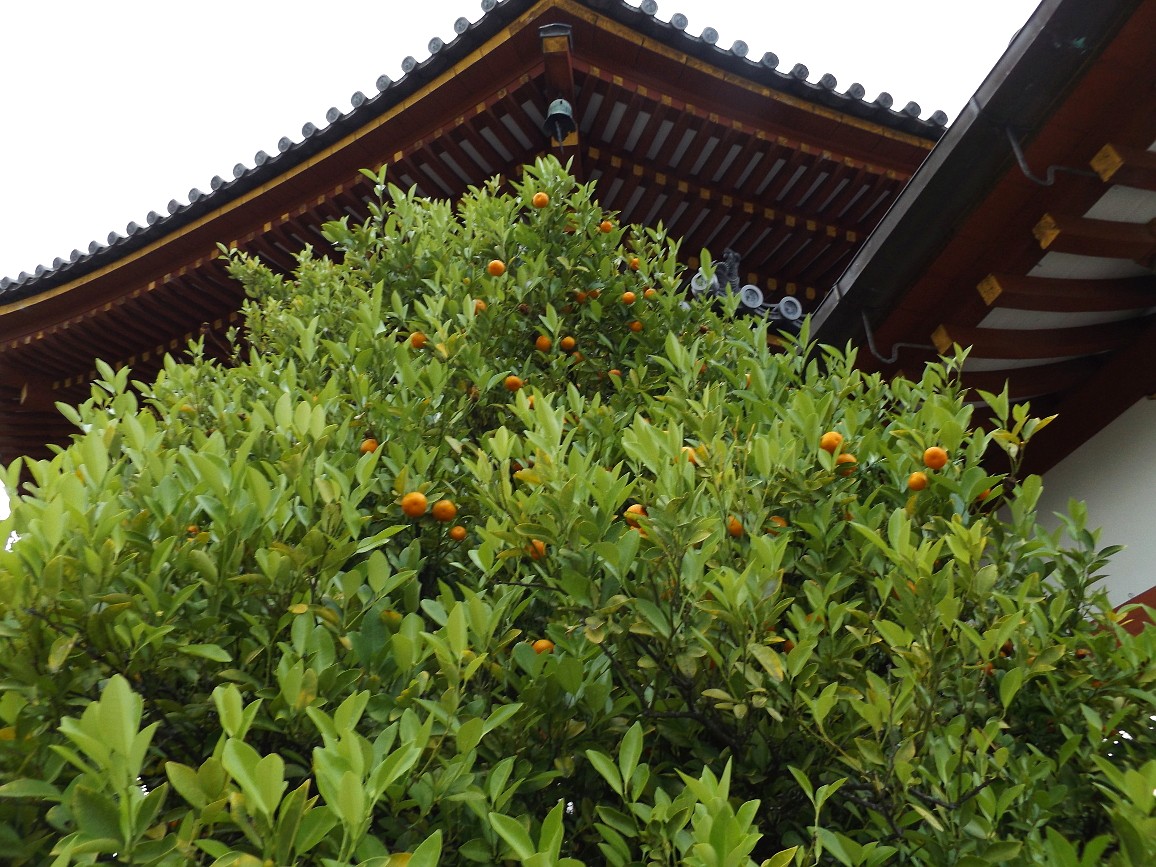
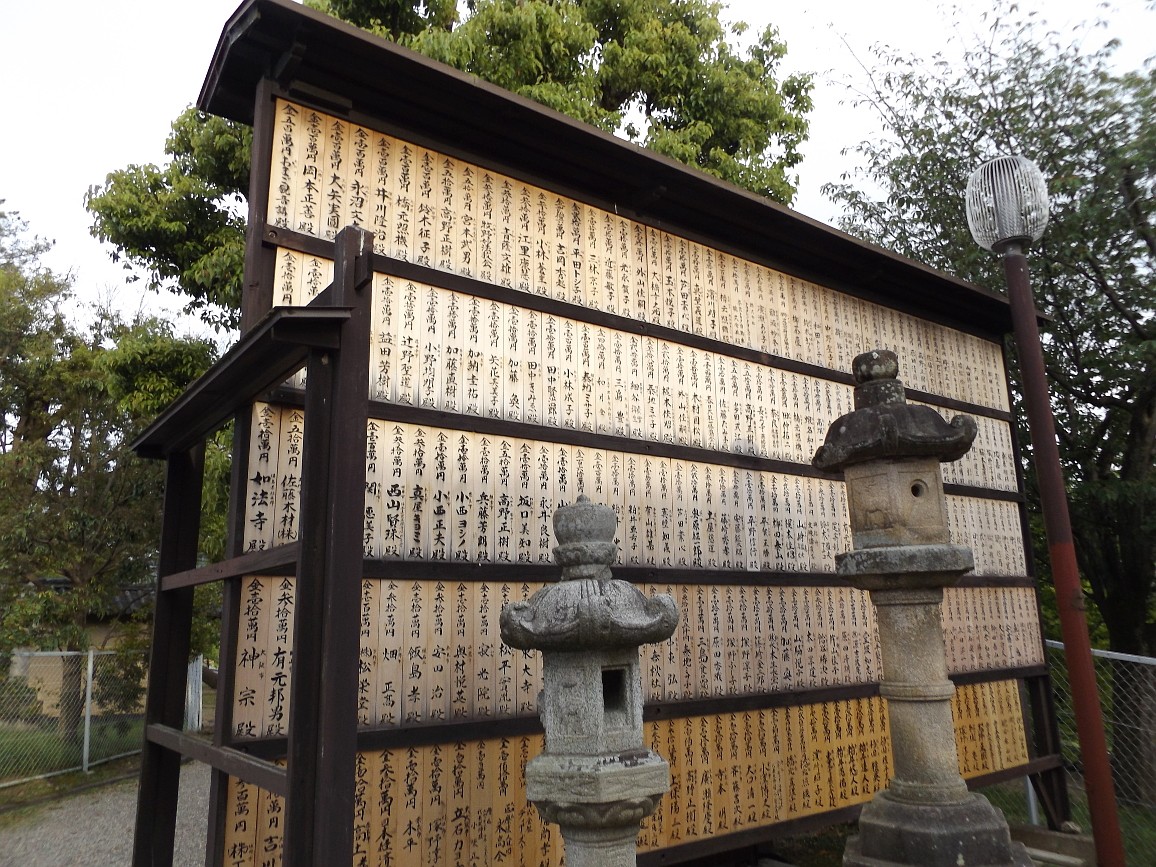
Quite a lot of old temples have survived in Nara. Tourists deliberately move from one to another, deer idly wander between them. According to this classification, I was more a deer than a tourist.



In the old center, the streets are narrow, in the evening trade is in full swing, people dine in izakayas. There are a lot of Europeans here, it just feels uncomfortable. With our curiosity, we turn authentic cities into human zoos.
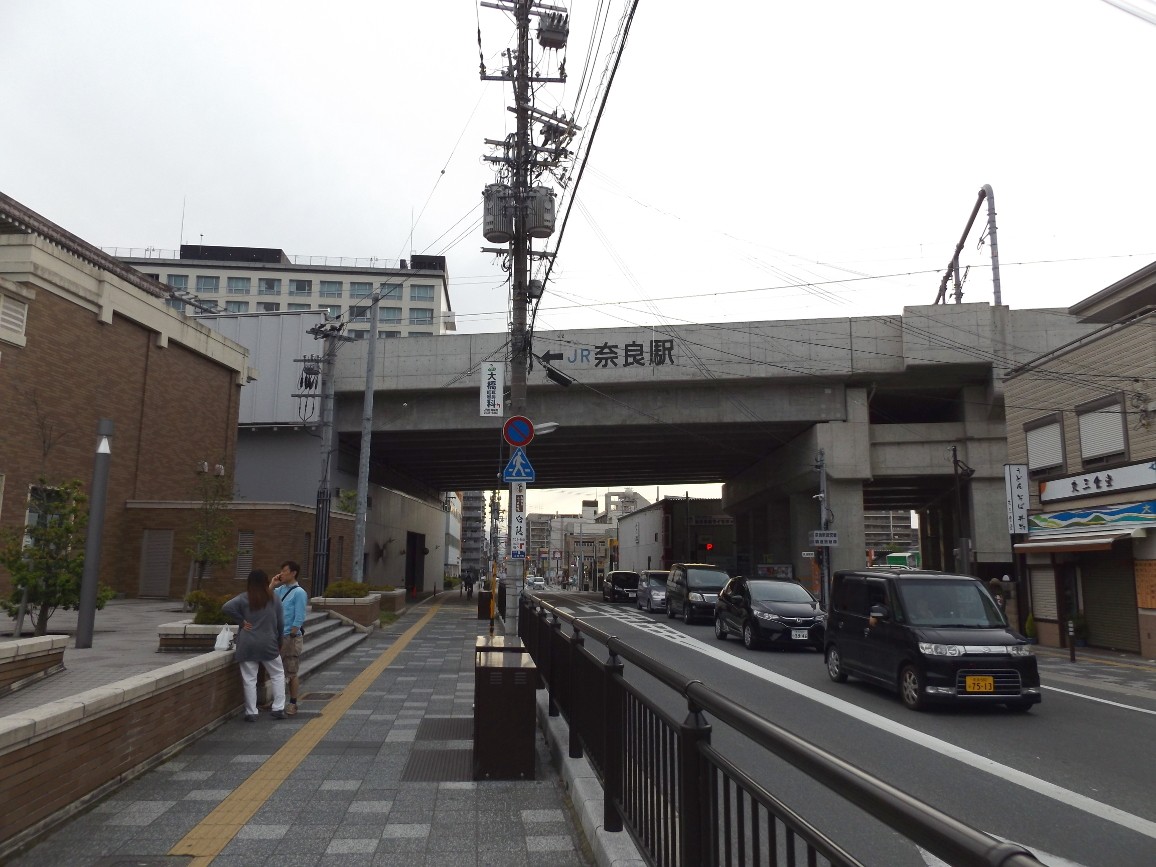

And outside the center, this is the most ordinary city.
Kyoto

Hello, the city of a thousand temples. Lucky you in the 46th.

My ryokan ended up on the outskirts of the city, in a traditional house, with low tables, tatami mats, futons, an onsen bath and sunken courtyard in the greenery. In the morning, a downpour began, which lasted all the time that I spent in Kyoto.

I took the subway and missed my station. Well, it doesn’t happen to anyone.

After walking around the area and realizing that the station is in all seriousness located among the mountains, which you cannot climb without good equipment and in dry weather, I decided to return to my station.


Bamboo forest on the outskirts of Kyoto. Cool, but I liked the mountains better.

Because of the rain, it wouldn’t have been possible to climb much, so I took a ride on the old train in the midst of all this mess.

I crawl to the center. The highways do not give out the features of the city, but literally behind every second fence there is a Shinto shrine.

Shogun’s apartment.
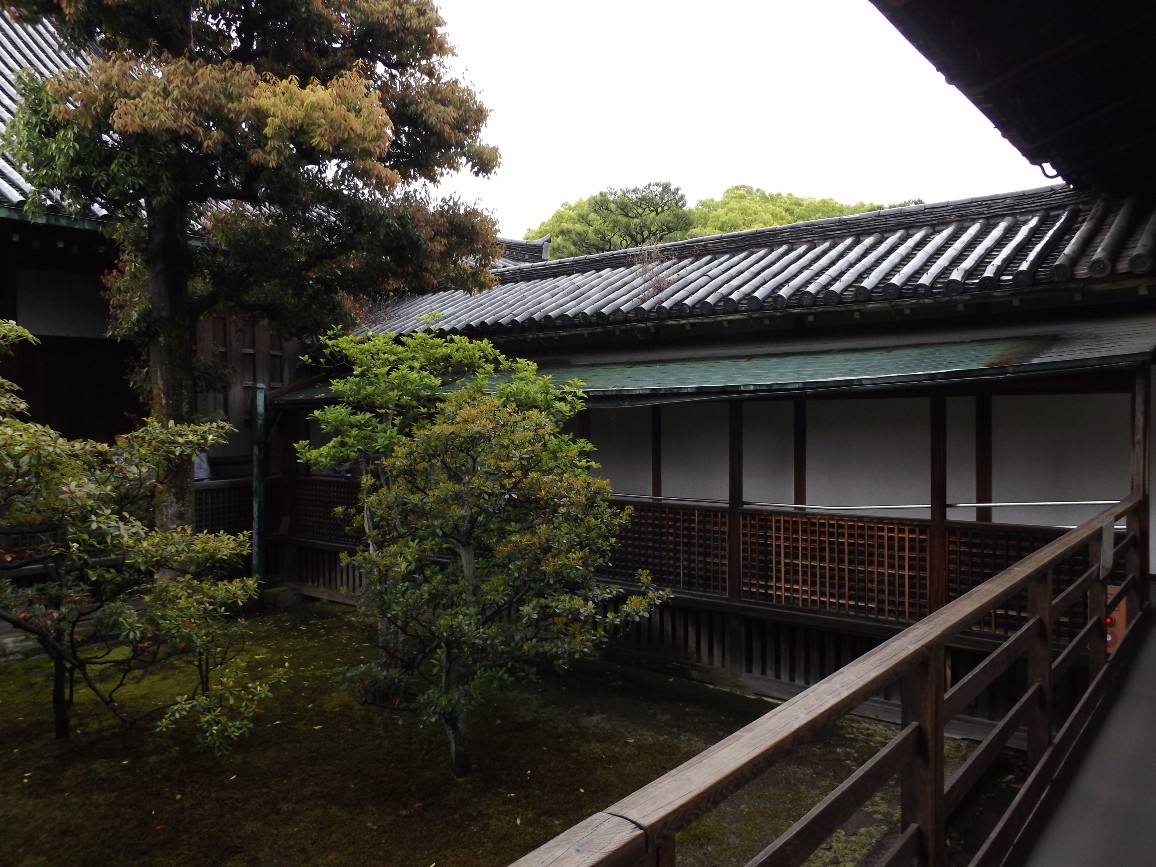
Perhaps the most modest of all the residences I have seen of people with the same power. Wisdom is not measured in gold.

Exquisite taste – even more so.

All this together is called the Nizio Castle.

The downpour does not stop. The quality of the sidewalks in places is poor.

Foreigners are frustrated by the parking lot near the bike parking sign.

Right next to the shogun’s castle is the palace of the emperor. The real rulers in the country were the shogun generals, although, according to legend, their emperor is a descendant of the sun god Amaterasu, therefore, to impress the dynasty of the sun-faced, they had to build something unearthly.

For example, the park around the palace is simply huge by the standards of Japanese population density.

To keep the park in good condition, maintenance personnel need entire bases on the territory.

Santa Barbara with local flavor.

But what is most offensive, the entrance to the palace is closed. The current emperor lives in a palace in Tokyo, there is no one here. But all the same, they are allowed only in groups with an excursion and you need to book all this in advance. Oh.

The outskirts of the city are atmospheric: wherever you go, there are mountains everywhere. Numerous temples and pagodas are hidden on the slopes.

Philosopher’s path. The downpour intensified again, so I was the only person walking there. A Japanese friend told me that everyone finds something of their own there and returns with impressions that are not similar to those of others.

And she was right. I was most impressed by the carps swimming upstream. But the current turned out to be strong enough, and all their efforts were spent so that they were simply not carried back. “Well, here, you know, you have to run as fast to stay in the same place, and to get to another place you need to run twice as fast.”

From the trail there are constant branches leading to … Guess?

Well, yes, it was obvious. Naturally, to temples.

This is the first time I’ve seen such a limitation. But why?
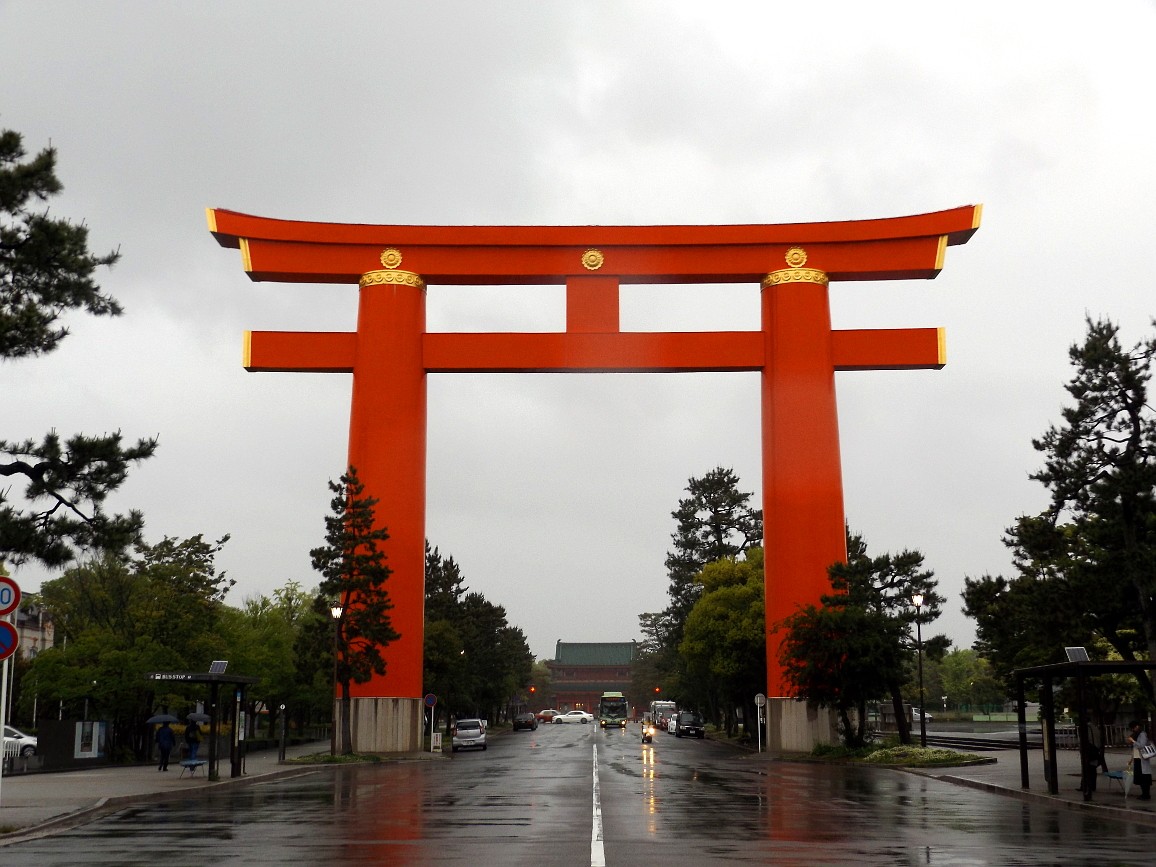
Giant reinforced concrete torii. O_o

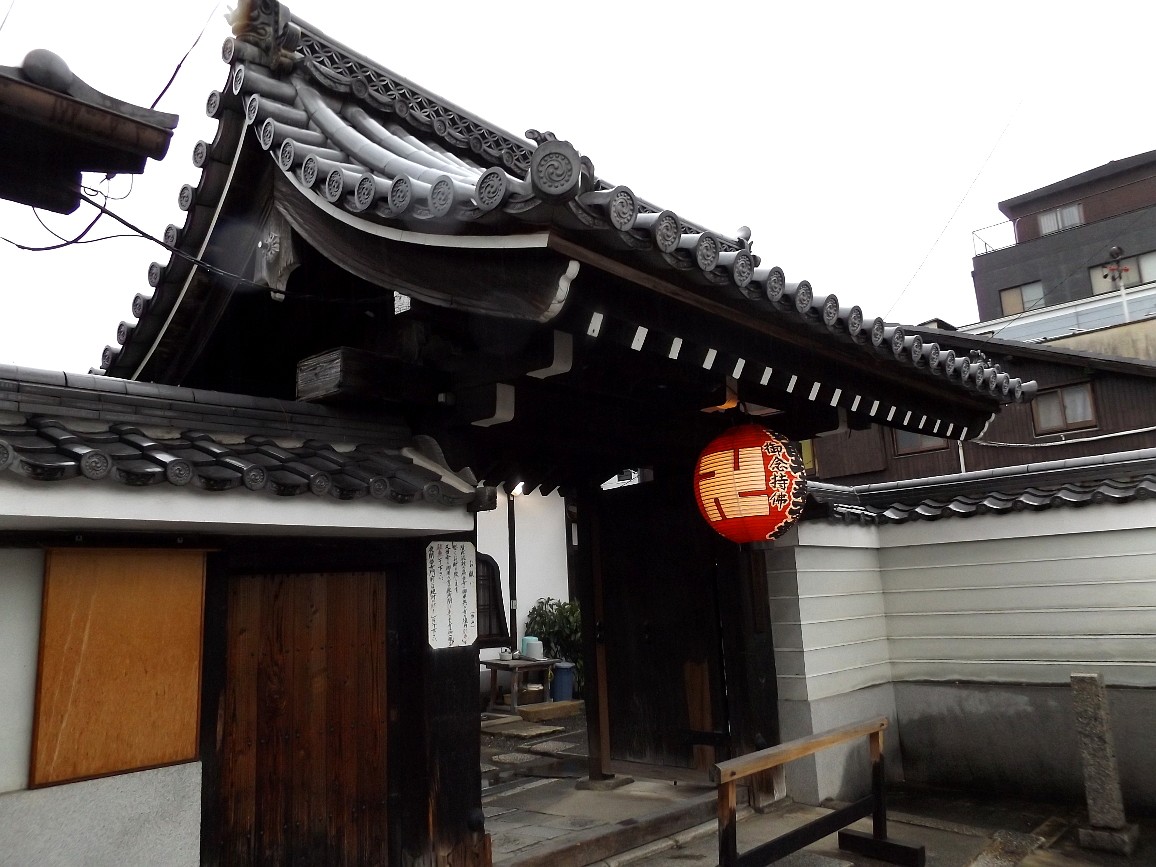

There are many temples not happens.

I got to Gion – the geisha quarter. There are, however, an order of magnitude more tourists than them.


Wealthy Japanese take pictures of geishas and … drink tea with them or listen to them play musical instruments. What did you think?

Learning an ancient craft is entirely based on mentoring. In general, “geisha” is translated as “man of art”, but besides art, they have one more role – the hostess. Geisha are invited to organize banquets and other official events.
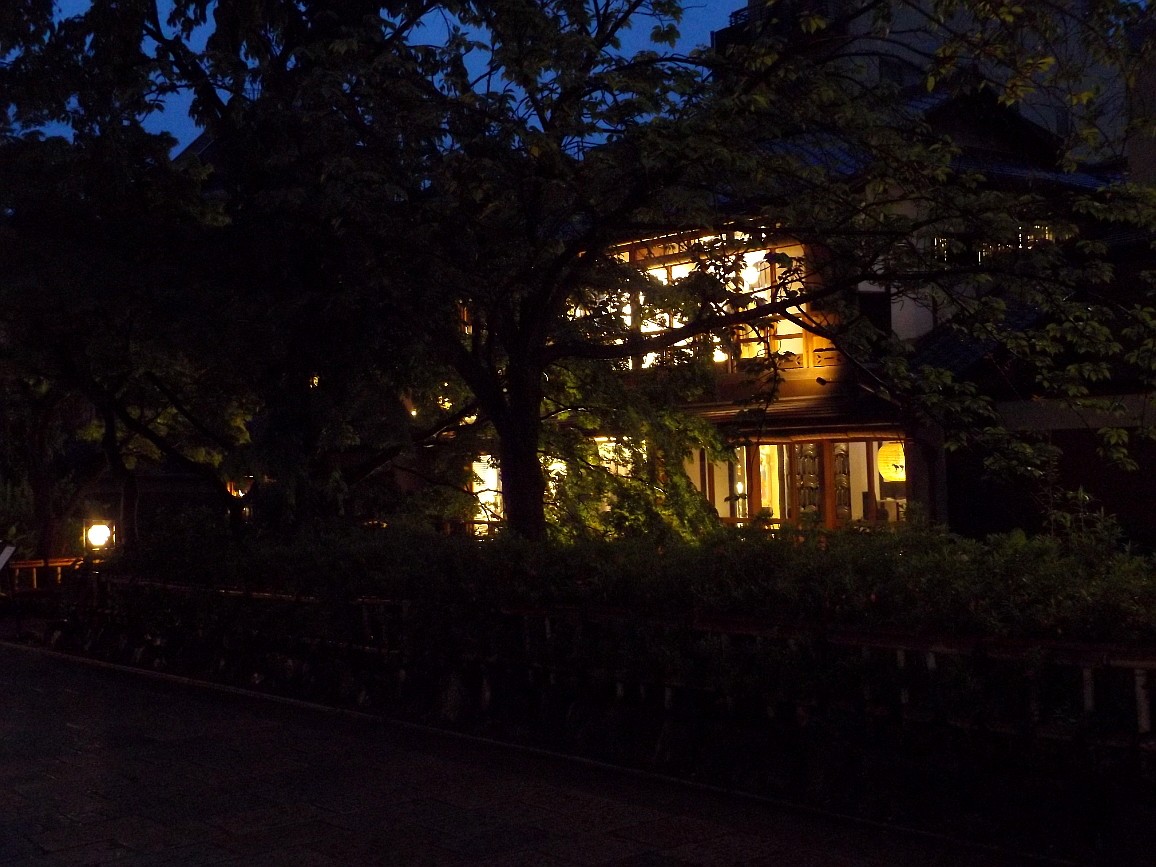
They work here in such o-tya – teahouses. Sometimes they are small, for one or two people, sometimes large enough to hold a business meeting or conference.

And even if the streets in the old center look cute during the day, then after dark they become simply amazing.

Nowhere in Europe did I have such a strong feeling, as if I was in a small fairytale city.

One large highway passes through the entire old center, the sidewalks of which were given to the mercy of traders.

But one has only to get off it into one of the narrow streets – and something amazing begins.
Yokohama

Yokohama is a satellite city of Tokyo, but I was advised to go here and make sure that it is no longer a satellite, but an independent center of civilization.

You realize pretty quickly that this is a city completely owned by heavy industry.
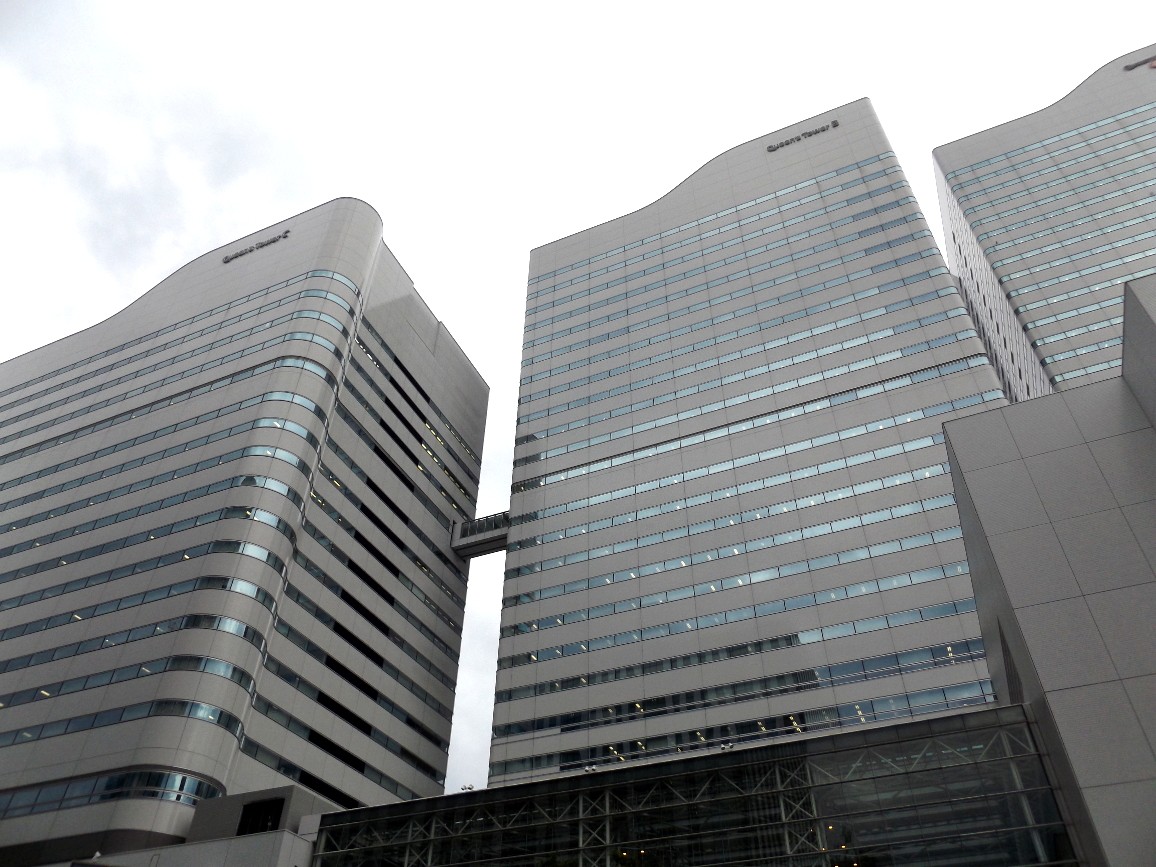
Leading Japanese engineering corporations, known all over the world, have gathered in one place. You walk down the street and see huge buildings of all kinds of Mitsubishi, Nissan, Chiyoda …

The area where all these monsters have gathered is called Minato Mirai 21, which means “sea gate to the future.” And 21 is the number of the century in which the future was to come. “The future has already arrived. It’s just that it’s not evenly distributed yet. ” Alas, the Japanese did not take into account the dynamics of China and instead of the first economy in the world, they became the third. The future was in the hands of their eternal opponents.
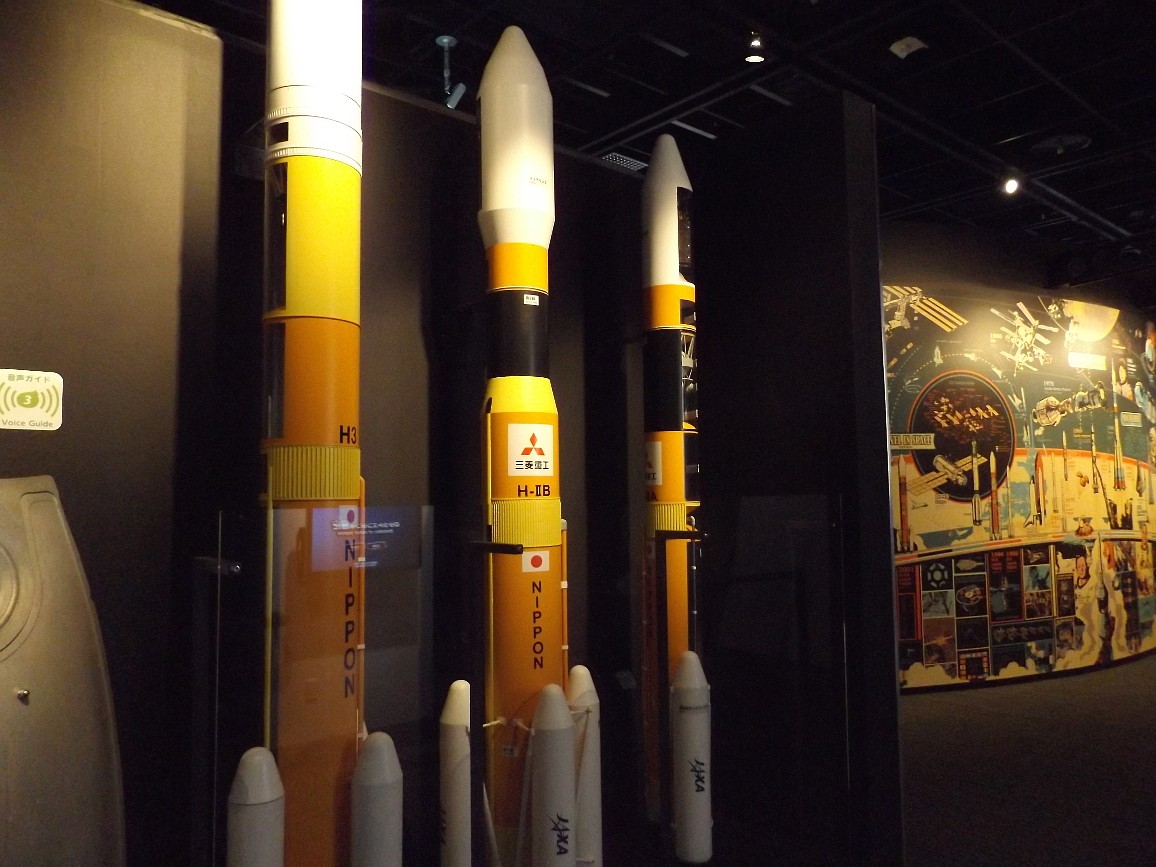
Did you think Mitsubishi only drives on the ground?



No matter how it is. And these are just vehicles. There are Mitsubishi windmills in the fields, Mitsubishi underwater probes are exploring the bottom of the ocean … Can you guess whose satellites fly in the orbit of our planet? And this applies not only to this one brand. Ask Google what other Japanese companies Nikon, Canon, Sony, whose offices are located nearby, are doing in addition to their main activities. You will be surprised at their contributions to the industry.


However, Yokohama was originally (and remains to this day) the largest port in the country. About 20% of all trade with the outside world passes through this city. Not surprisingly, virtually the entire coastline is navigable.

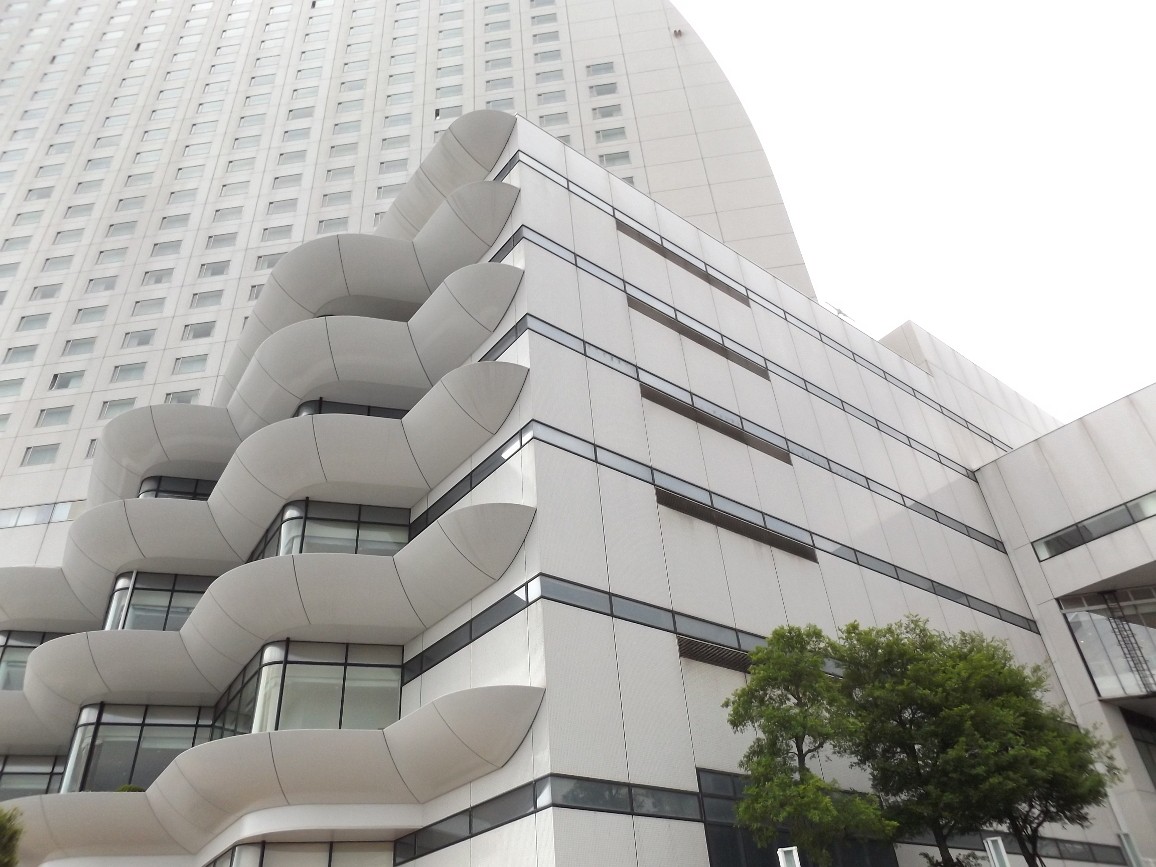
And this is how new buildings look like in this area.

If you think that this is a Ferris wheel with a clock, you are grossly mistaken. This is Cosmo Clock 21 and this is a watch with a Ferris wheel. Not the other way around, it’s important. At the time of its construction, in 1989, it was the largest Ferris wheel in the world. Then there were all sorts of London Eye with Singapore Flyer, but losing the status was not so insulting, because the Ferris wheel is secondary, the most important – it’s still the largest watch in the world. Owned! & Nbsp ; I told you that the watch is the most important thing here.

Cruise terminal of the city, Osanbashi.
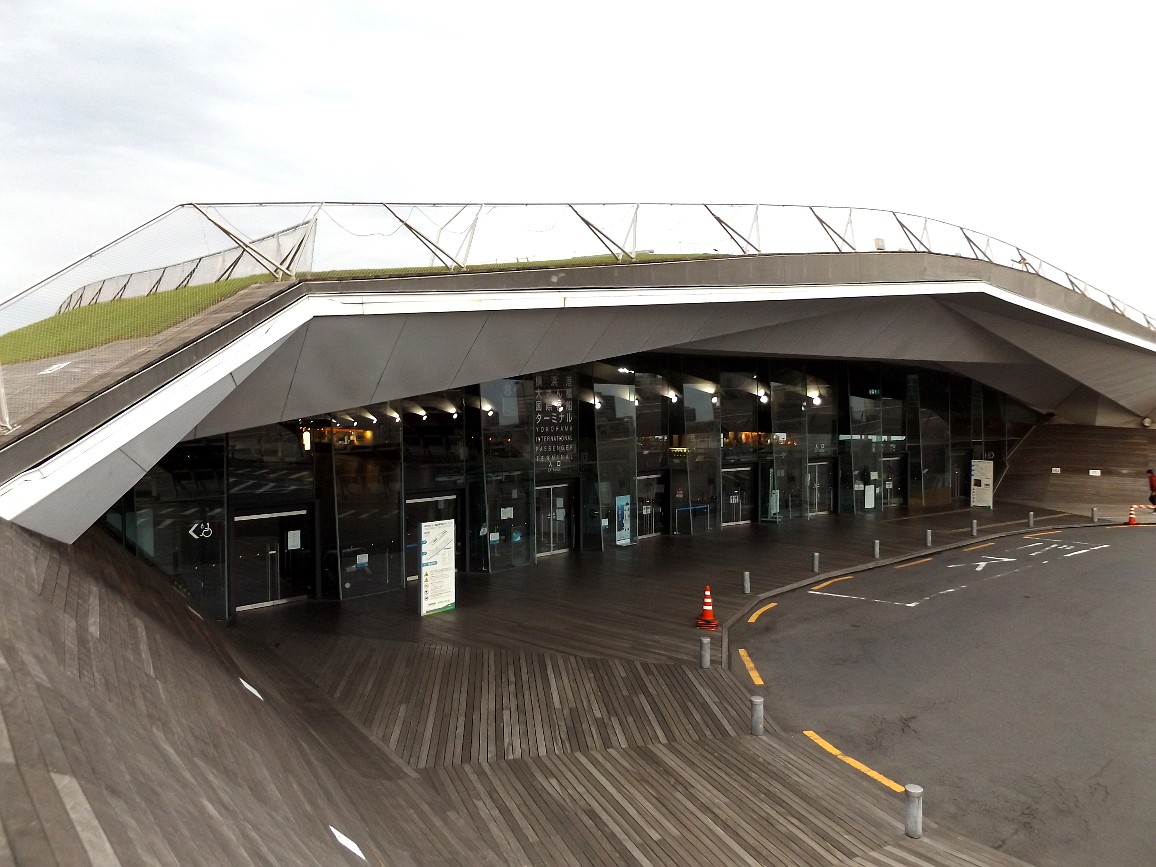

Officially, this is an ordinary object of the same project “Minato Mirai 21”.

But in my humble opinion, this is the most stunning cruise terminal I’ve seen.

This is really a sea gateway to the future.

And here is the complete opposite of all Japanese hi-tech. This is Chinatown, and one of the largest in the world. And here they do not like these high technologies of yours.

Here they love everything bright and sparkling.
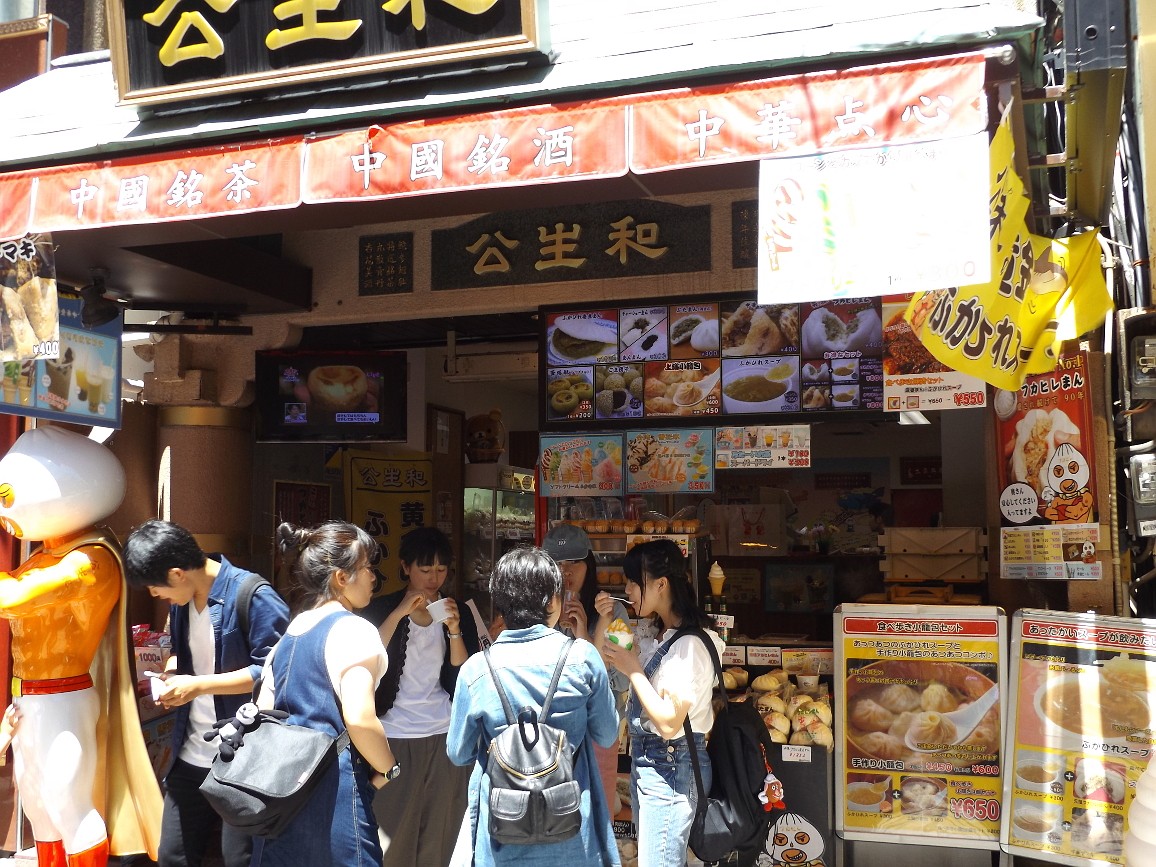
They love to eat here.

Here is the residence of the most amazing superhero of our time. Meet the irresistible Man-dumpling.

And, well, pandas are also loved here. In general, the essence of everything that happens is that many Chinese immigrants work in the heavy industry. Where the Japanese don’t want to work.

Chinatown is located in the center of the city, and it is all the more surprising to go out of it onto wide avenues, clean streets. Even the air is cleaner here, because no one fries meat on the street. Crazy contrast. I think the Japanese are very uncomfortable in other industrialized Asian countries like China or India.
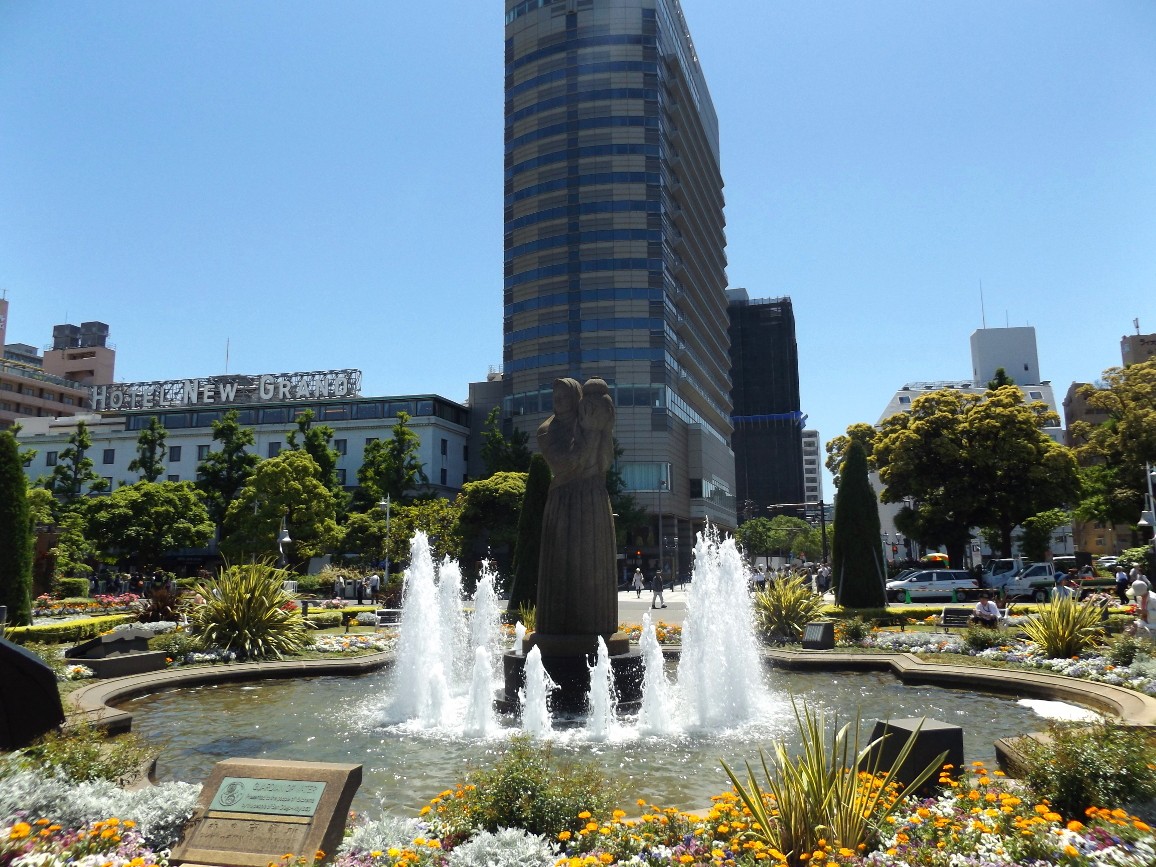
Right on the embankment I discovered a park drowning in flowers and greenery.
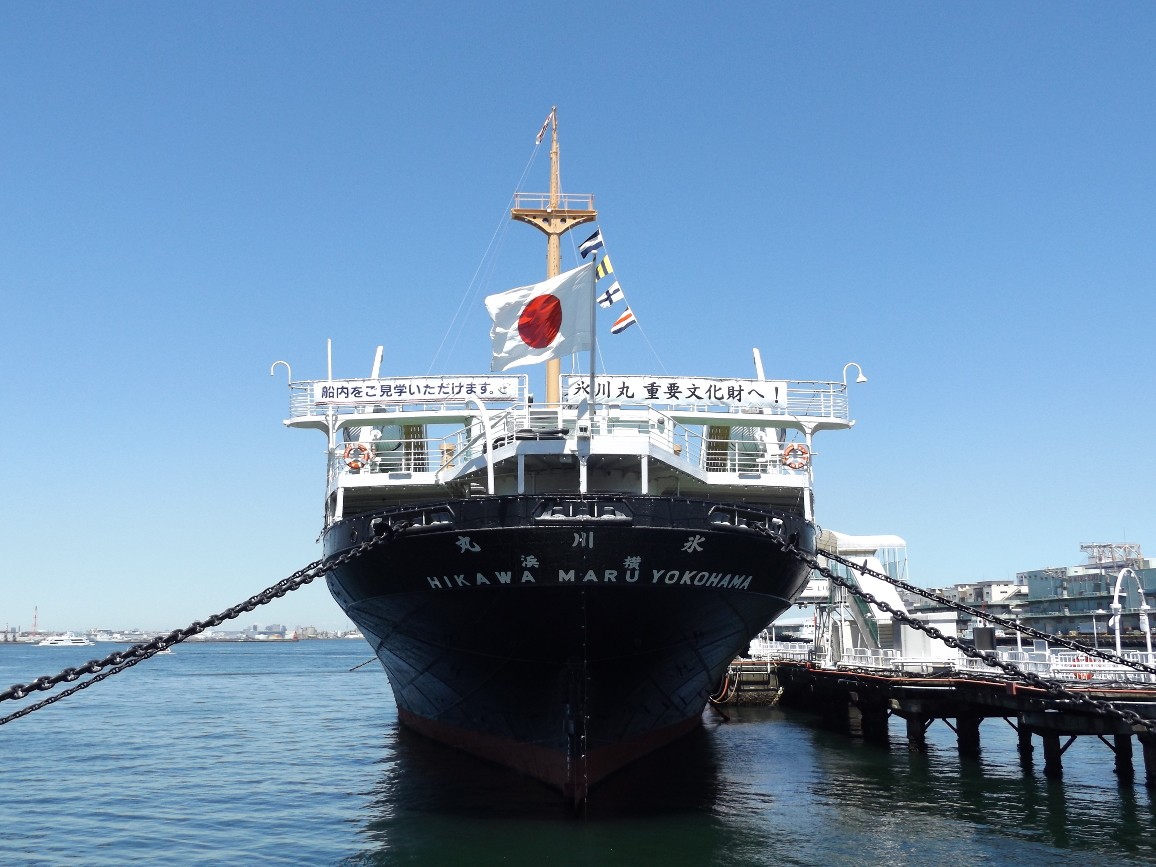
Parked near the park is one of three ocean liners involved in the attack on Pearl Harbor. Only Hikawa Maru managed to survive in the retaliatory vengeful meat grinder, and then only due to the fact that he was a floating hospital and the Americans did not dare to sink an entire ship of the wounded and sick. It is now a museum piece.

Behind the industrial buildings, you can hardly see the Tokyo Bay, for the sake of which this observation deck was equipped. Soon it will be like in China: you go up to the observation deck, you look at the smog-covered sky and you are given a photo of the view that would have opened if there was no smog. Only instead of smog there is concrete, and it never dissipates.

I decided to go rollerblading and went nuts from the relief in this part of the city. I haven’t slowed down for so long in a row.

It seems to me that parks are a feature of this large industrial city. But this tiny park turned out to be special because of one small detail.

The benches along the sidewalks are turned in the opposite direction. And it turned out to be an amazing move, because instead of tracking people walking, eyes rest on uncluttered lawns or even a small grove. Almost the same, but the feeling of personal space from such a move increases by an order of magnitude. In my opinion, this is brilliant.

And this is the coolest park in the city, Sankeien.

The entire park was built by one wealthy entrepreneur named Jara Tomitaro.

He traveled to the regions of Japan and for a song bought dilapidated historical buildings from local residents, transported them to his hometown and restored here. For example, these buildings came from Kamakura, this is a small town very close, literally 15 kilometers away.

But this three-tiered pagoda came from Kyoto, where I was just a couple of days ago, this is already 350 km from here.

Climbing the highest point in this park was not the best idea. It offers a panoramic view of the real Yokohama.

Buddha in the share.
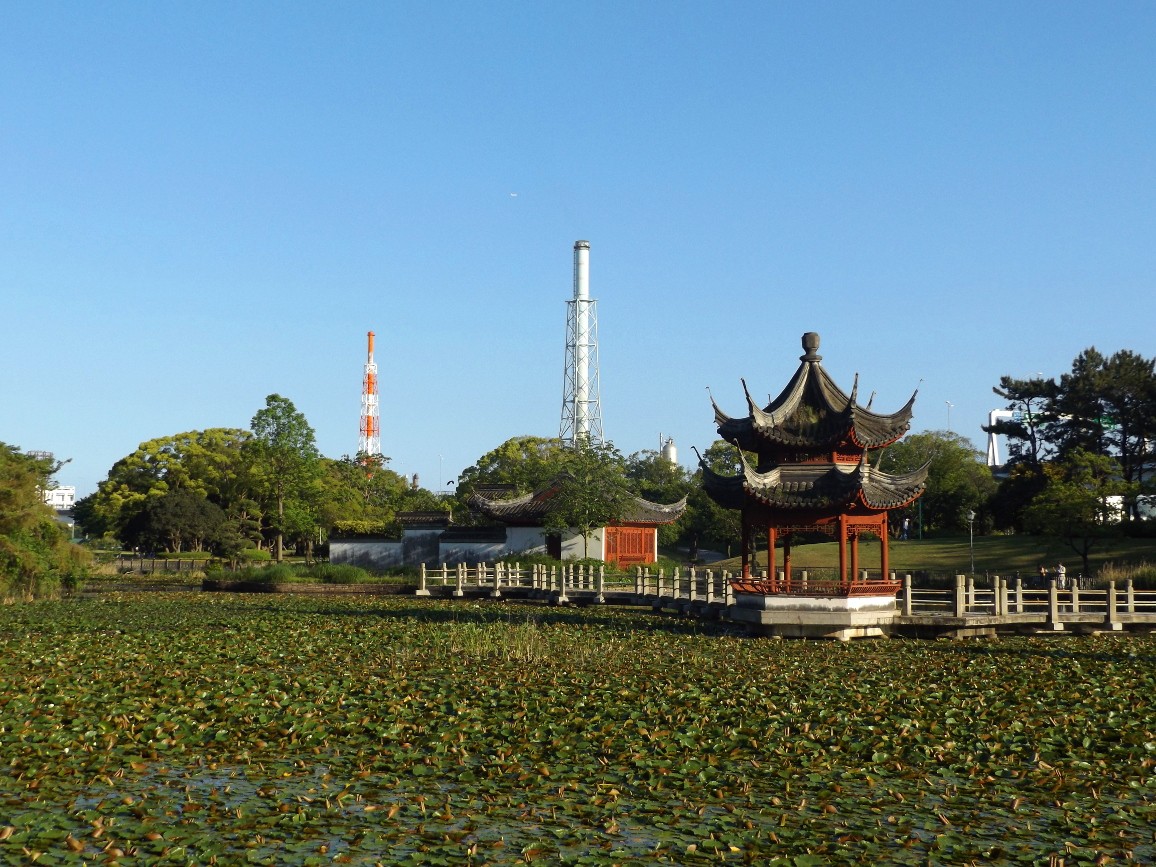
Once again I was convinced that the Japanese parks are amazing. We ought to learn from them somehow, otherwise the creations of Kievzelenbud with enviable regularity cause me cognitive dissonance.

Line for the train at rush hour. The Japanese do not like to push and drive like a herring in a bank, so while they are waiting for the train, they line up in an organized way, then they enter carefully and go deep into the cars so that everyone is comfortable.

Driving back to Tokyo. I thought I missed this city a little, but a little later I caught myself feeling as if going home. A very strange feeling.
Tokyo

Modernism in Shinjuku. Pure geometry.


Above, corporate life is in full swing, and below it is very casual.

A casual business center.

Roadworks with a local flavor. And why not, they can afford it.

And here again the total transformation of the surrounding space.

Only 5 minutes from me is the densest urban development with skyscrapers, traffic-laden streets. And here is complete serenity.

Shinjuku Gyoen is one of the largest and most visited parks in the city, but at the same time there is no pathos about this, at most even more neatly trimmed bushes.

All the same key characteristic – here disgustingly cute. This is really a place where you want to return again and again.

Let’s go further.
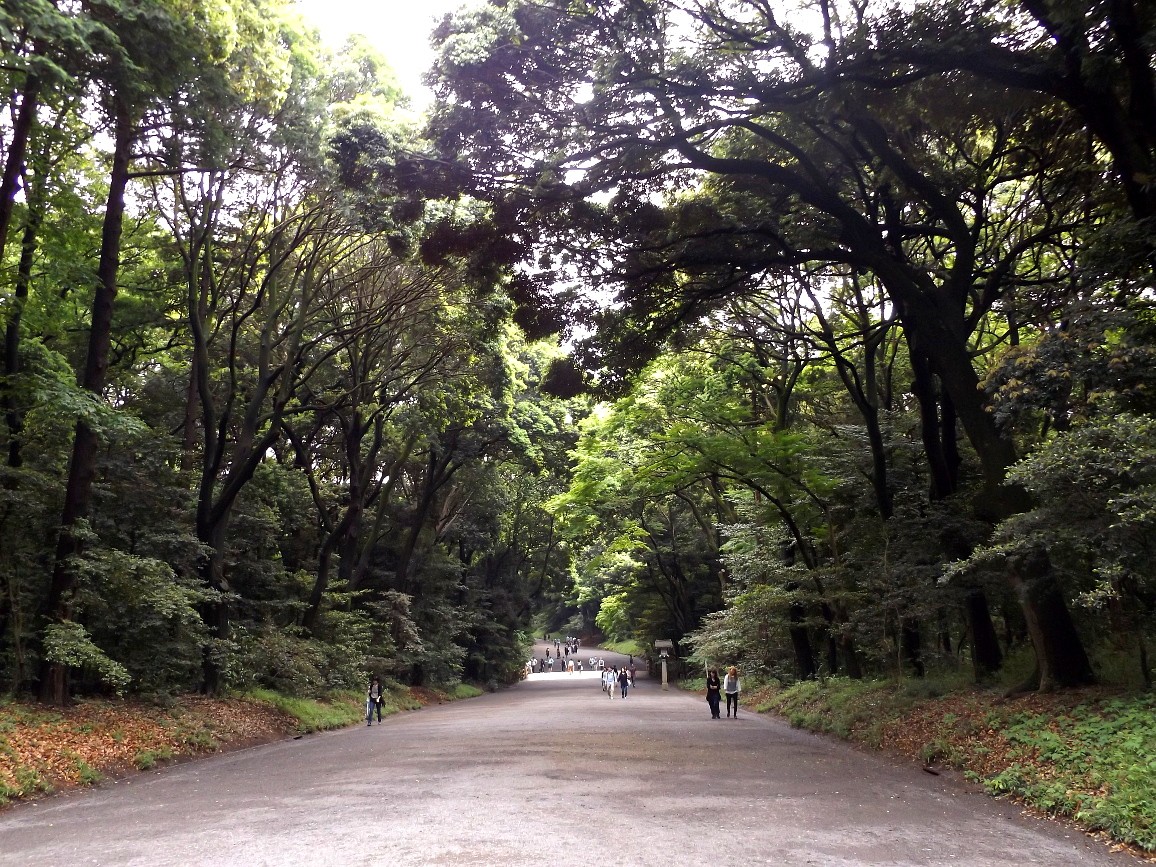
A giant park dedicated to the Emperor Meiji. By the size of the “paths” you can guess that this is the largest park in Tokyo. The most interesting thing is that it was built by local residents on their own initiative: the fact is that Meiji was a very atypical emperor. He abruptly stopped the country’s self-isolation policy, which had lasted for 200 years, and began to actively establish diplomatic ties with the entire surrounding world, while inside the country, meanwhile, an industrial and then a social revolution took place under his control. In short, having come to power in a backward, poor feudal country, he left it one of the strongest powers in the world.
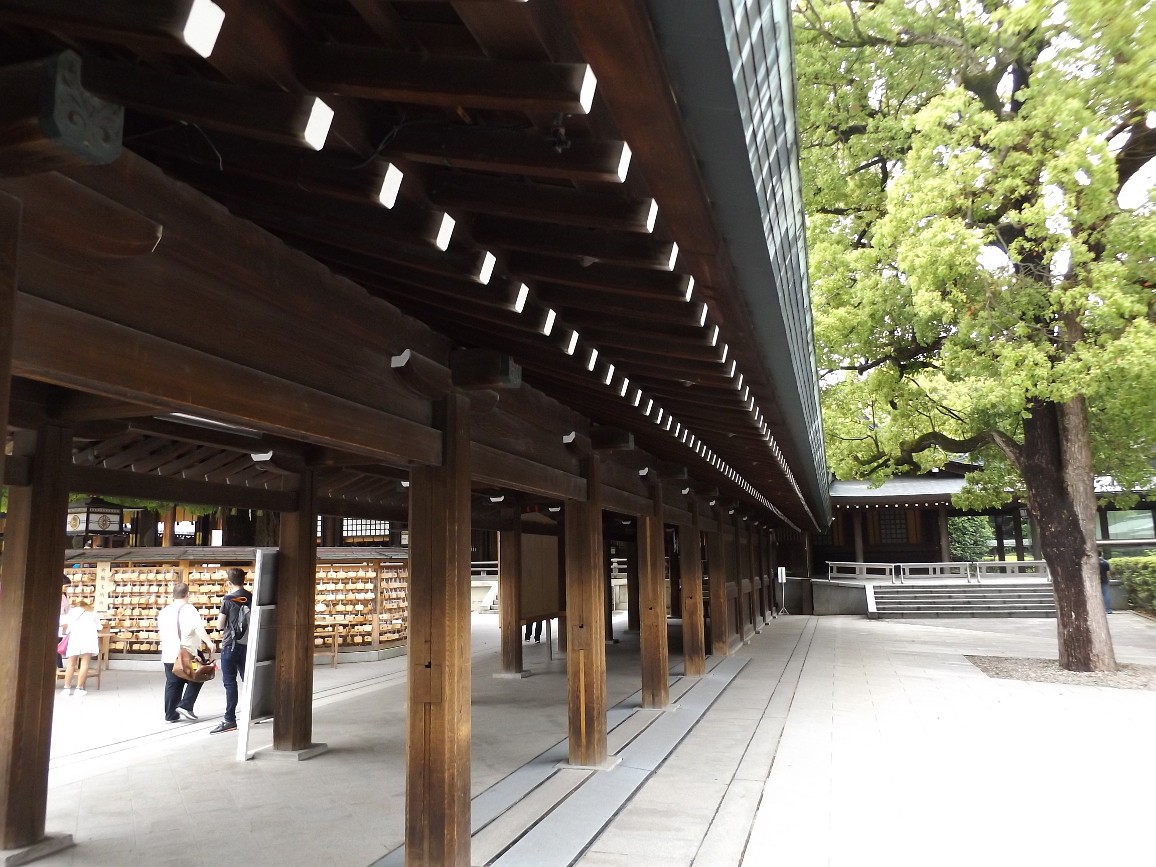
In the center of the park there is such a large-scale Shinto shrine. As I said, these guys seriously believe that the emperor is a direct descendant of the sun god.

At the exit from the park in the direction of Shibuya, stands with barrels of Burgundy wine are installed – a friendly gift from France to Japan that has opened up to the world.

On the contrary, there are colorful barrels of sake donated to the Meiji Shrine by other Shinto shrines that produce it.

Just outside the park, Harajuku’s street fashion district begins. On Sundays, especially well-dressed teenagers gather here for a weekly cosplay, and the rest of the time people walk here to the numerous shops selling cool clothes, shoes and various accessories.

The prices here are noticeably lower (although still overpriced) than in Shibuya, but most importantly, there are a lot of men’s clothes here. The fact is that a traditional Japanese family – the husband works, the wife does household chores and at the same time completely disposes income, so usually most of the staff is focused specifically on girls who are ready to actively spend money on anything cute.

It’s different in Harajuku. Here you immediately feel that this is an area of youth fashion, with a break from tradition and a desperate desire for a breath of fresh air.

I’ve never seen so many stickers in one place. Ideal quality, with protection against burnout in the sun, soft gloss and, what is remarkable, absolutely all copyrighted. Just as an example of an approach.

I came across an amazing combination of comfort-taste-price coffee shop, which also turned out to be a workshop of custom bikes and a concept shop. By the way, the Japanese make the most delicious coffee in the world: wherever I tried it, even at a hipster stand, at least in large coffee shops, it was amazingly tasty everywhere, leaving the aromatic liquid from Italy far behind.

I decided to experiment more and asked the cutie barista to make me his favorite drink. As a result, I got the most delicious matcha latte in my life. I never thought that it could be made so delicious.
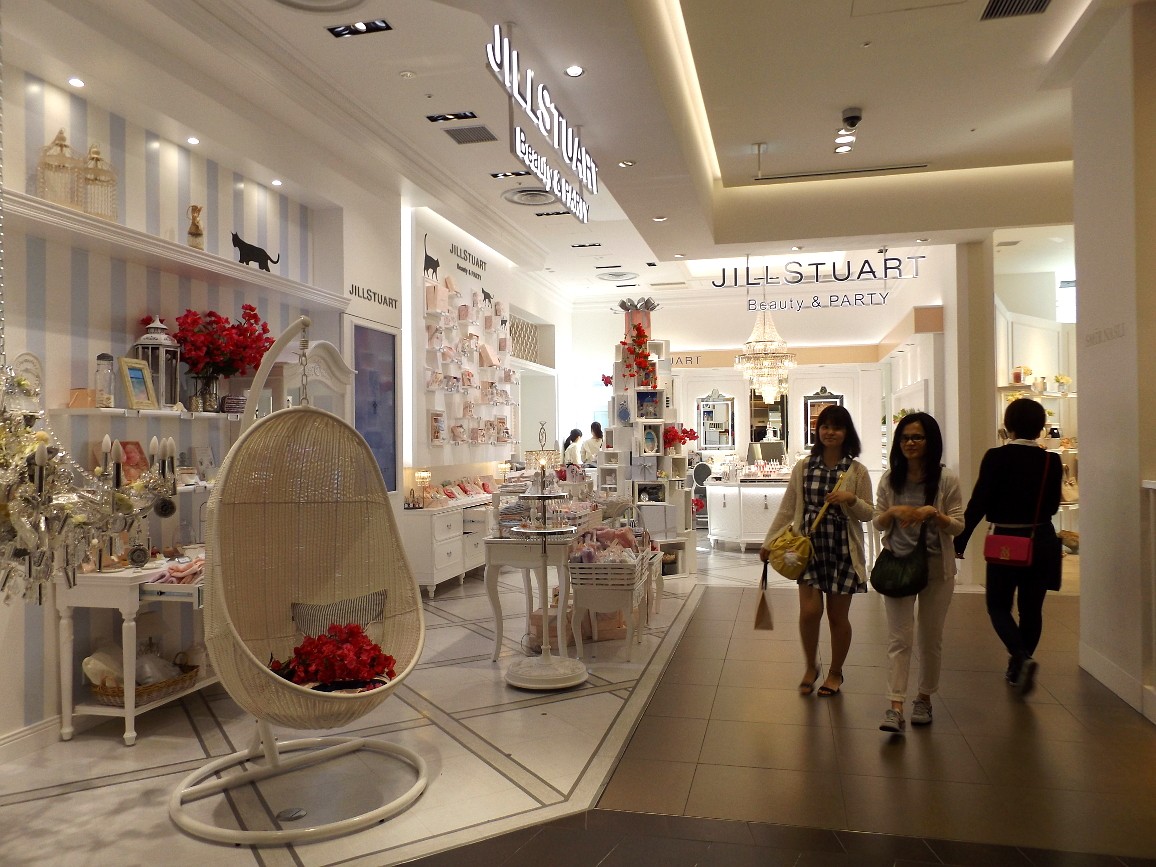
The Harajuku youth fashion district flows smoothly into the expensive Omotesando. Well, here you can clearly see who the target audience is.

Escalator to another dimension.

I’m very sorry I didn’t film it. From the inside, the entrance to the mall looks like a big kaleidoscope, and when people walk past it, it feels like they are swarming all around you. Indescribable sensations, a kind of human man.


Rooftop Starbucks and wonderful panoramic views of the city. Ideally.

Shibuya, the center of all Japanese fashion. The concentration of large shopping centers with cute things here is off scale. In front of me is Shibuya 109 – both a mall and an object of worship: the coolest clothes are sold here, all at fairly high prices, exclusively for girls, and in size only for an ideal figure (however, like most Japanese women). It seems to me that ugly visitors this place can just bury their self-esteem.

I’m 21 and I’m walking through the Forever 21 mall. I felt kind of stupid about it. However, I found a couple of things here for myself.

National competition “squeeze maximum”: Loft – eight-story gift shop. The only problem with these places is that you want to buy everything.

The Japanese do not like to give cut flowers. This is partly due to the fact that they believe that a soul lives in every plant, and, therefore, a cut flower is a soulless gift, a symbol of hidden indifference.

In addition, fresh flowers will become part of the home space, thus, your gift will stay with this person for a long time, and will not be thrown away after a few days.

Perhaps the most famous dog in the world. 80 years have passed, but the bronze Hachiko is still waiting for the return of its master.

The same crazy crossroads that flashes in all the works of about modern Japan, from Hollywood “Fast and the Furious” to countless anime girls. Traffic lights from all directions simultaneously switch to green and in seconds the empty square is filled with a huge number of people, and after a few more seconds it becomes empty again and then cars are already driving along it. I believe that this is a kind of analogue of the Kyoto “philosopher’s path” in the sense of what is happening.

There are shopping centers, boutiques and other shops in all directions from the intersection. Sometimes, bypassing the entire mall, you can immediately go to another, without going downstairs.

An interesting contradiction: you save money by completely abandoning waiters and any kind of service (dishes are delivered on a conveyor belt), and instead of neglect, you have ten times more visitors. It remains to add that the food in our sushi bars, even after dinner from such a conveyor belt, seems generally somehow dry and stale. And after one good restaurant it will be difficult to look at our “Japanese cuisine” without an ironic grin.

I didn’t understand before what some people find in these dirty neon streets where people look like swarming ants.

In reality, this everything turned out to be incredibly atmospheric. All these streets have a special charm, a special mood. It was necessary to feel it for yourself.

In the morning I wanted something magical, and since it was in Tokyo, where people search for the coordinates of fabulous places in Google, I quickly found something and after 20 minutes I was on the subway. The stations here are very long, the trains have many carriages, everything is designed for a large passenger traffic.

This fabulous place was the Museum “Studio Ghibli” (authors “Spirited Away”, “My Neighbor Totoro”, etc.), which to my horror was closed for reconstruction exactly before the date of my departure.
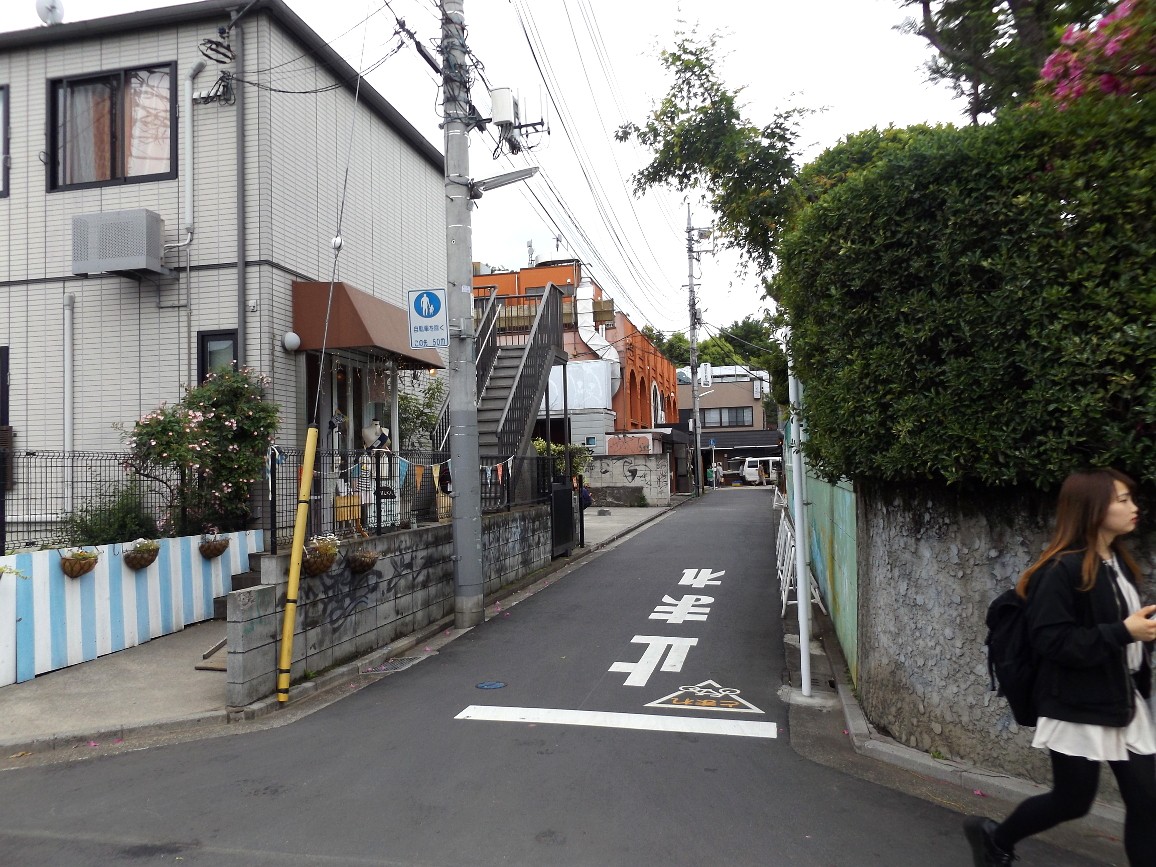
I’m going to explore the streets of this outskirts of the city. The small cozy streets are so quiet and calm, as if it were not at all in a metropolis.

Instead of a fabulous exhibition, I found a fabulous park.

Not a bad replacement, I must admit.

Well, I already said, what a puppy delight these little cute parks cause me? Yes? Okay, I’ll say it again.

They are incredible!

I finally got to Shimokitazawa, which I had seen so many times in foreign guides as a hipster district. I was already beginning to get the impression that I might be missing something important.

In fact, everything turned out to be much more prosaic. There are no hundreds of cool cafes and bars here, no designer stuff, nothing that I associate with a hipster neighborhood. But there are many shops where you can buy necessary things and casual clothes, so locals love it.

I accidentally noticed the garbage collection schedule and I had a moment of awareness. The fact is that in Japan there are no street garbage cans as such, people do not throw garbage, but carry it with them. It turns out that it is sorted at home and the car picks up the required type of garbage on the appropriate day.

I am looking for another fabulous place. In Shimokitazawa, there are no clear signs, because whoever needs to know it already, who is interested – finds it by just such hints. 🙂

Entrance to the rabbit cafe.

It has its own little magical world. Some pussies are resting in a corner.

Some of the rabbits are in the cage. Then some are released, and instead of them tired rabbits go to rest in the cage.

But those who were released run around like crazy, jump on their pens, play with visitors.

For a nominal fee, you can buy some food for them. This immediately +20 attention from hungry galloping cuties.

Without options, this is the nicest place of all time in Japan.
Chiba Prefecture
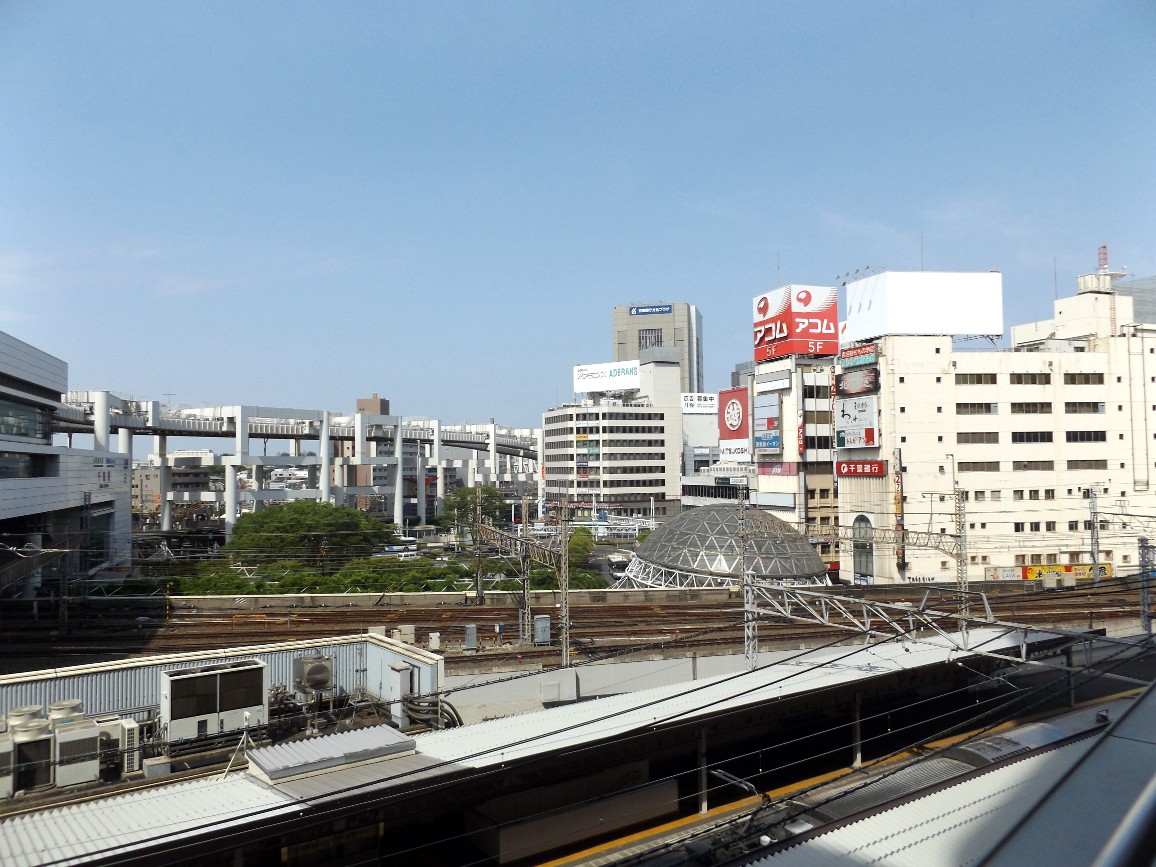
It’s good that William Gibson has never been to the city of Chiba that he describes so vividly.

The city is about the same distance from Tokyo as Yokohama, but is its opposite as much as possible.

Cyberpunk will come here very soon.

The monorail that appeared here in the 80s was a symbol of technocratic change.
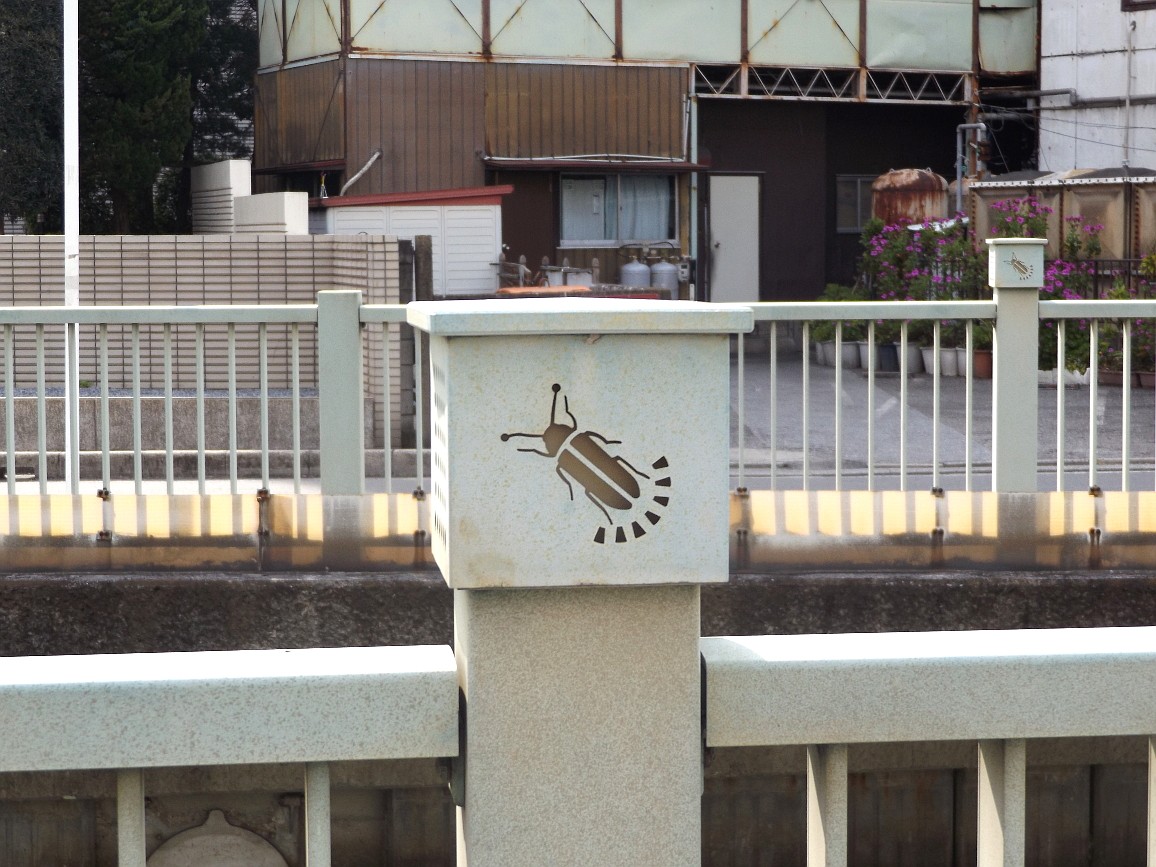
But something went wrong and it turned out just a backwater. Do not believe science fiction, they make it up. 🙁

I got to the town of Isumi, the embankment of which is already the Pacific Ocean. There are characteristic warning signs “Beware of the tsunami” throughout the city. This is where my marathon starts.

There are plans to go around the perimeter along the ocean coast of the entire prefecture, about 100 km on roller skates. Here we go.

After a few hours of driving along the forest highway, I reached the town of Onjuku. And suddenly he saw the ocean in front of him. And suddenly the guys who were riding on the surf saw me and started asking where I came from, what it was like to ride on the road on the road, where I was going, and were so amazed at the answers that they decided to feed them and invited me to spend the night in a trailer. How can you not fall in love with this people after that?

Actually, this is how tsunamis are experienced where they occur regularly. There is no first floor in high-rise buildings, but on the second it is already completely safe.

Suddenly, it turned out that the small town of Onjuku is the place where the Europeans, represented by the Spaniards, first landed in Japan. What a surprise it was.


Villages along the coast. The coverage is still excellent. There are no high-rise buildings in the villages, so there is a high wall on the embankment, against which big waves break, without “licking” the houses of residents.

Sometimes the road cut off a peninsula and began to look like an autobahn. At such moments, you feel a little strange, moving on your own two feet.

“Watch out, crazy fatty proteins.”

On one of the many road signs I saw something strange. Katsuura was in front of me, Ubara was next, but wait, what kind of Utopia is this?

If anything, utopia is translated from Latin as “a place that does not exist.” Out of confusion, I decided to go for a swim.

I can’t imagine what’s written here, but this grandpa scares me.

And just a few hundred meters later, a tunnel begins, which for some reason does not have duplicate bike paths. Cars rush by, and I remember my grandpa with a halo and try to snuggle closer to the edge of the road.

Yes, guys, you’ve picked a great place to build a temple. I’ll go and pray to the god of savvy.

It looks like a tiny Japanese town Katsuura. Our provinces are far from even their small villages.

Road signs continue to delight me.

Someone painted the entire transition tunnel with fish, jellyfish and algae, turning it into a long drawn aquarium. It turned out cool.

Another quiet Japanese village.

There is not much entertainment here. At eight in the morning, a bunch of people walk along the rocky embankment and collect shellfish.

Lots of small rice paddies just to avoid the exorbitant price of rice.
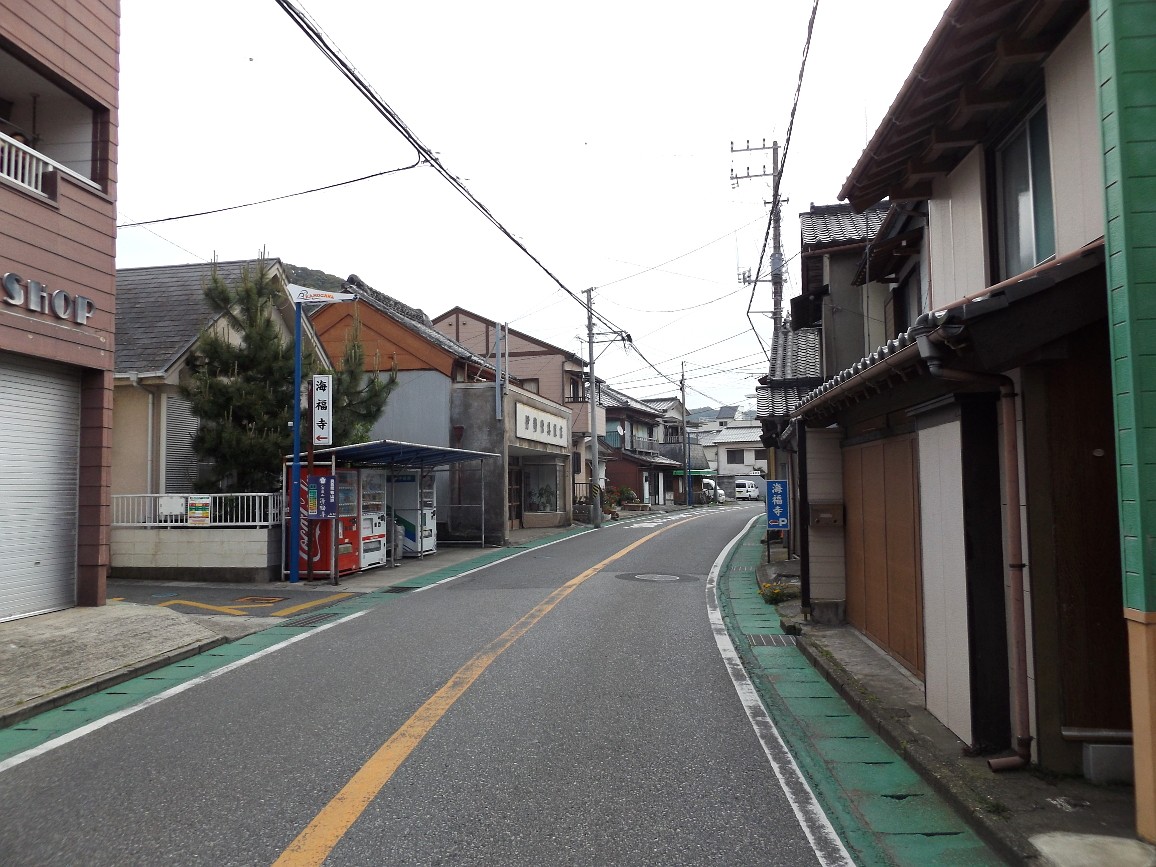
Village center.

It seems that someone was inspired by the work of Hundertwasser and built himself a house in the same style. Not single “concrete boxes”!


In Kamogawa, I discovered a dump of things pulled from the bottom of the ocean near the city. People then sort all the finds, send the recyclable materials for processing, something for examination, something in the trash.

I got to Hama Kanaya, whose embankment is no longer an ocean, but Tokyo Bay. And I did not meet the promised dozens of kilometers earlier by the road sign of the city of Utopia. It looks like it was really someone’s witty joke.

I decided to cross the bay by ferry and take another ride on the opposite side to the airport, from where I have a plane in the evening.


Yokosuka
Reserved forests and the beauty of nature give way to industrial landscapes. This is Yokosuka, there are only factories, factories and a fleet. United States Air Force Fleet. Yes, the occupation ended only formally, the American troops have been stable here since 1946. Now, however, in the role of allies, but we know.

I can’t imagine what it looks like just another strange sea idol.

A very cool tile that creates big waves. Laid out perfectly straight, so the implementation did not disappoint.
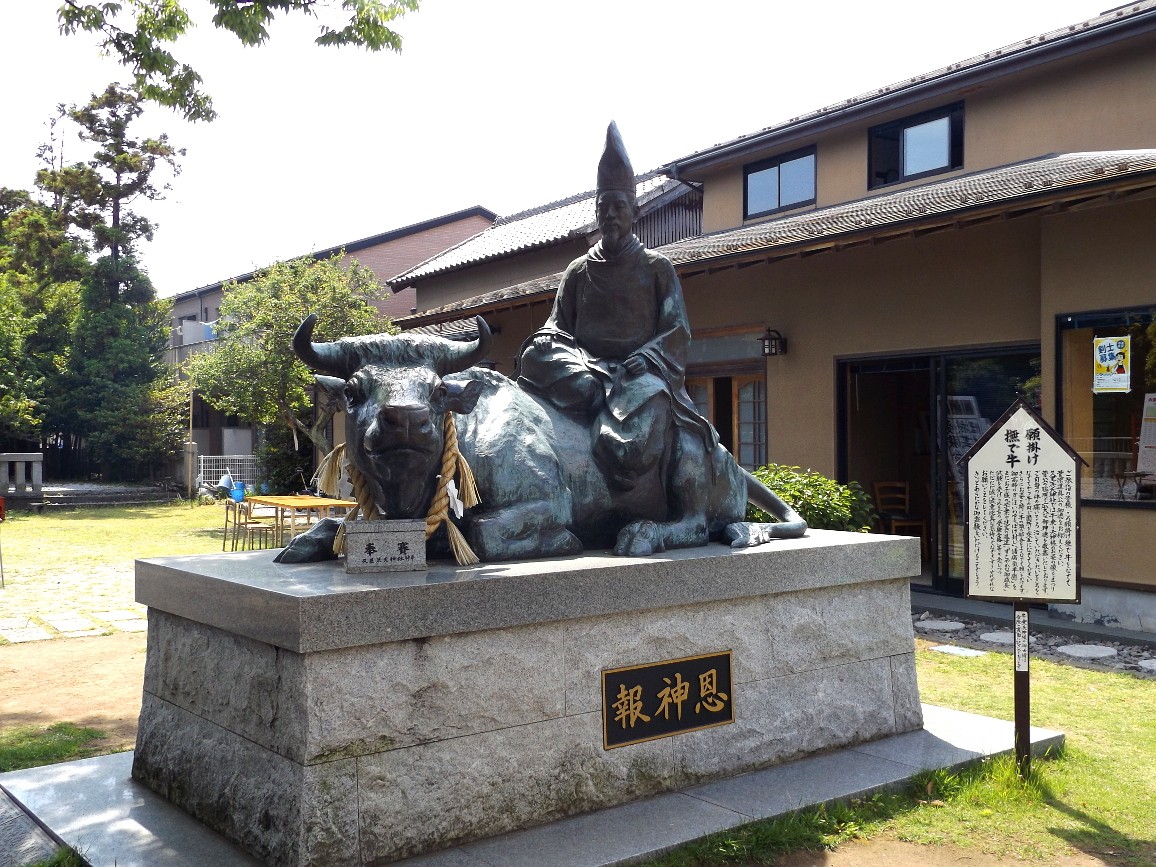
Patron saint of one of the Shinto shrines.

Someone decided to plant tulips in a huge vacant lot in the center of one of the districts of Yokosuki.

Oh, and finally I’m at the airport. In an hour and a half, I will already be on a night flight home, trying to realize what a cool country I have discovered for myself.
And now not only for yourself.